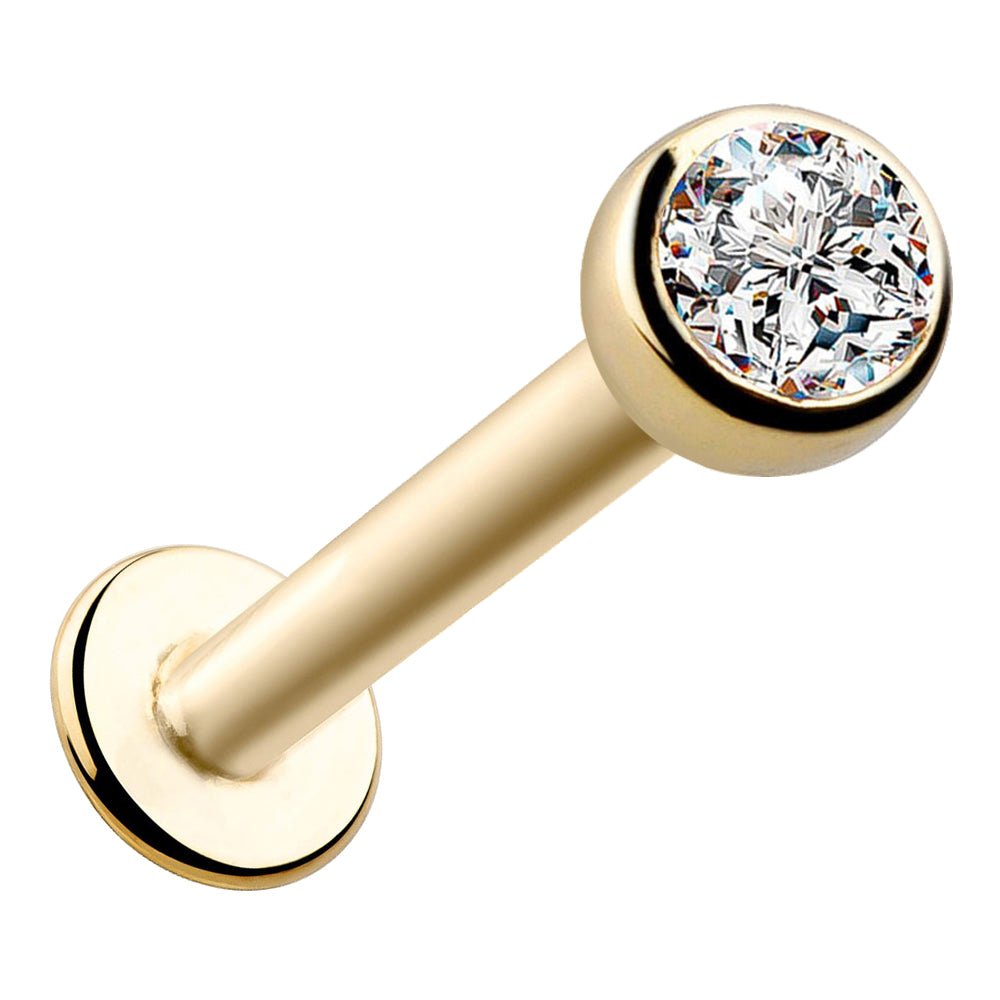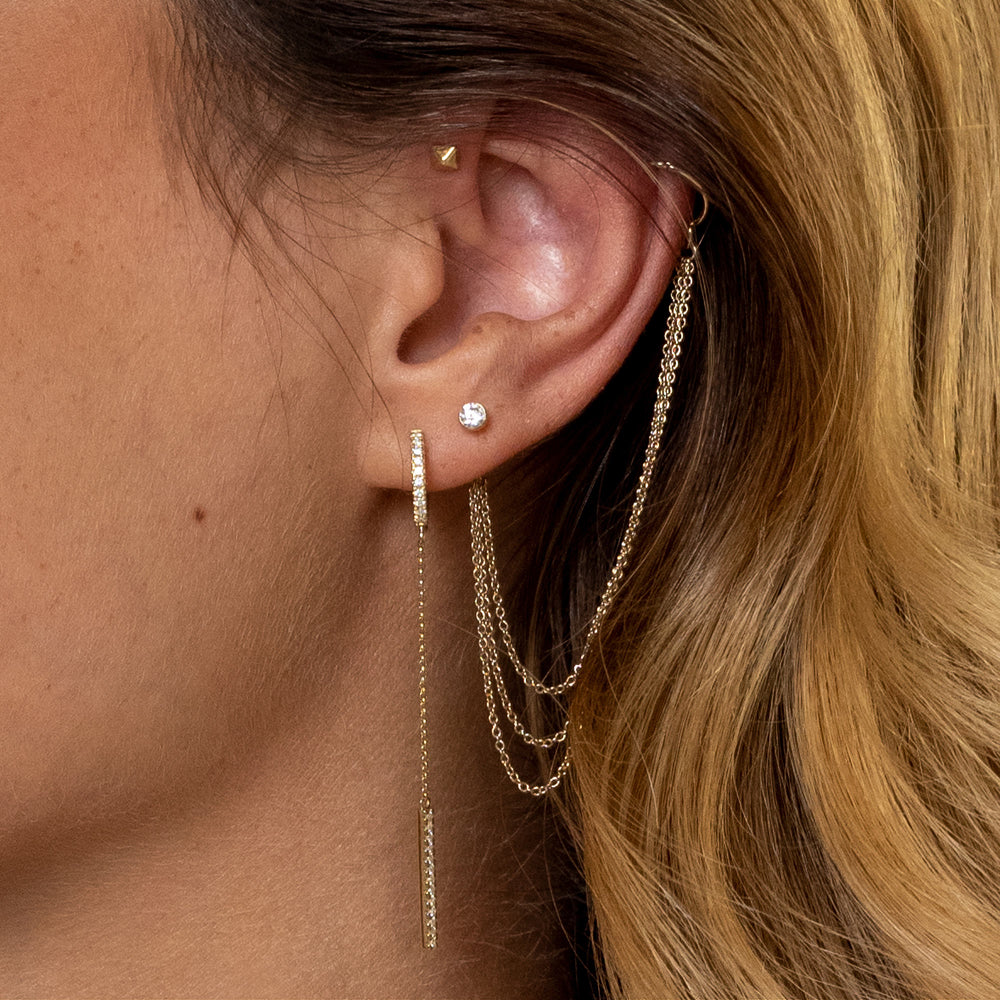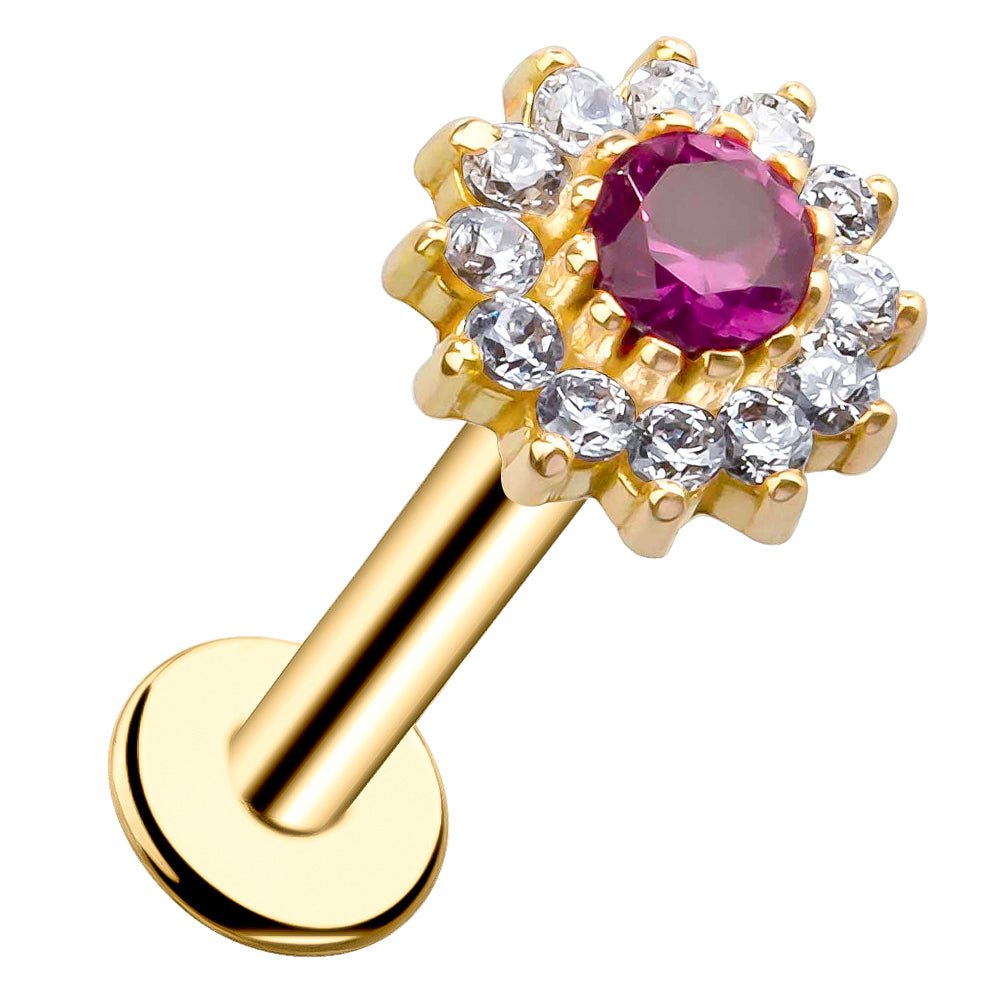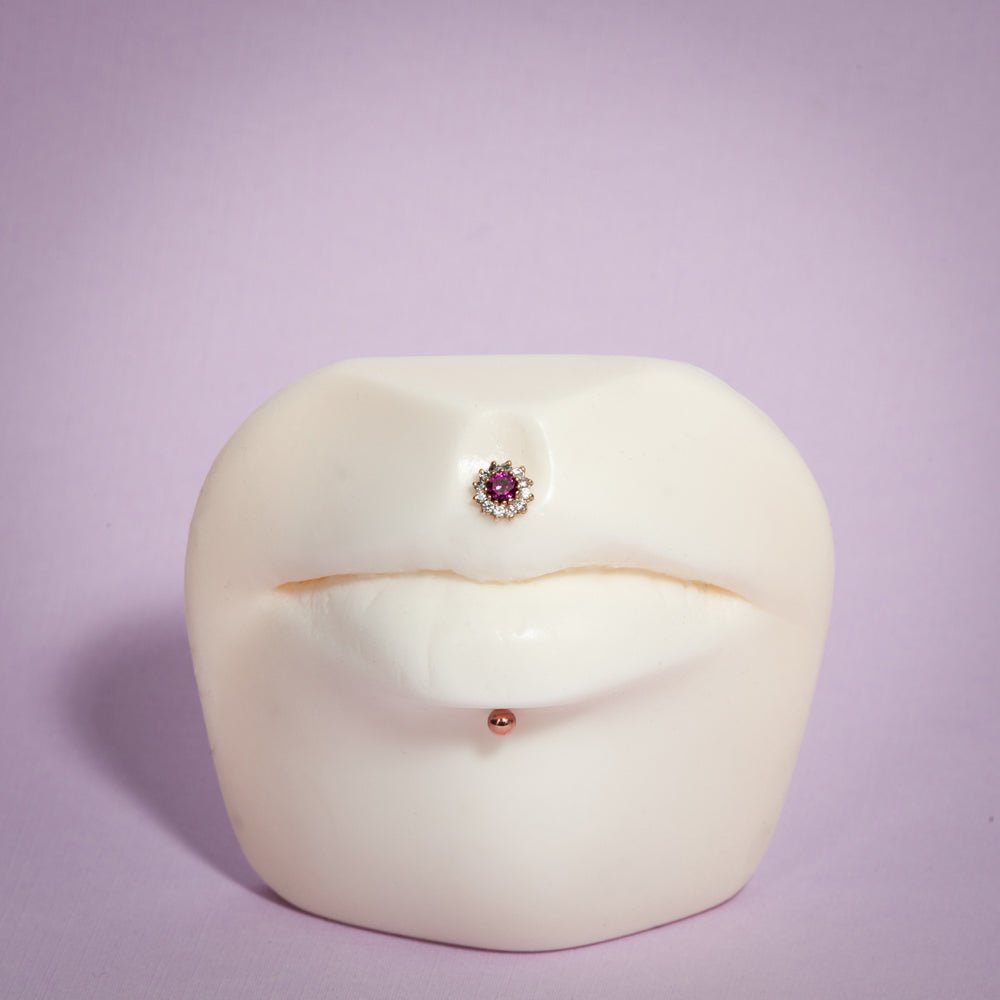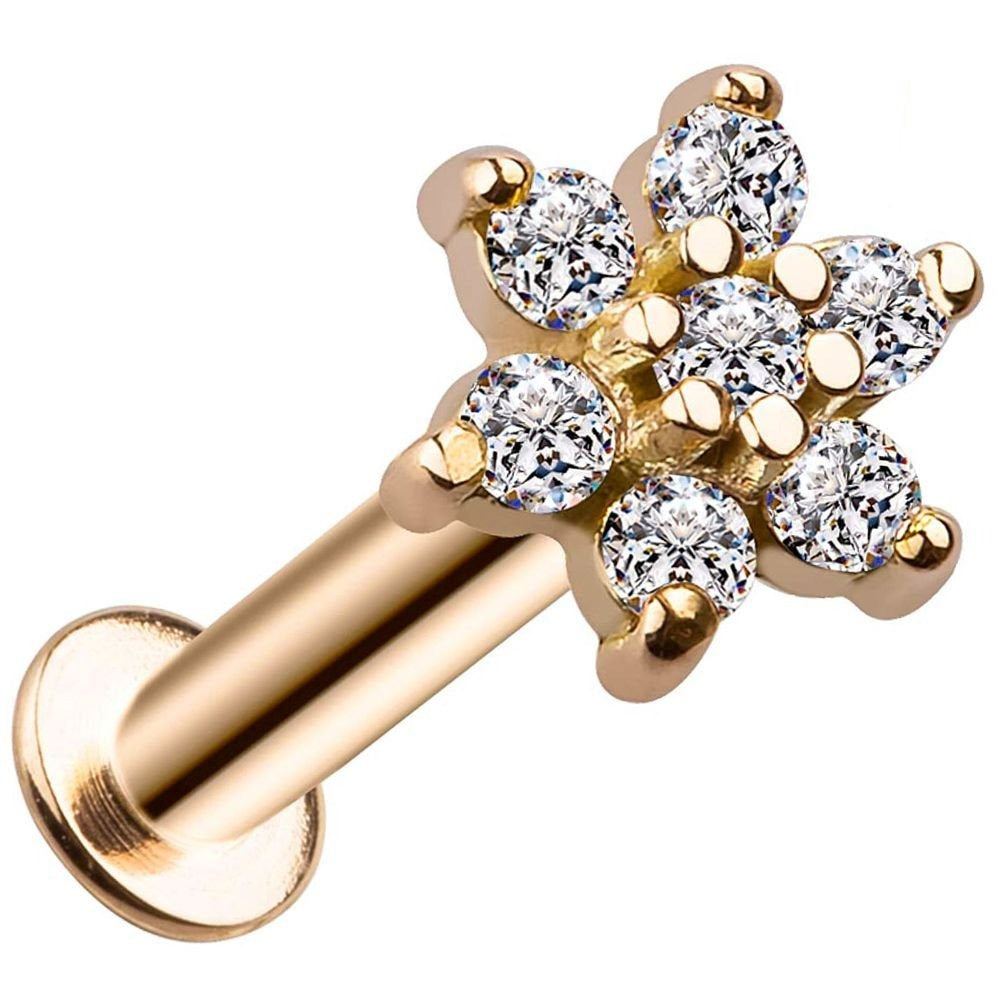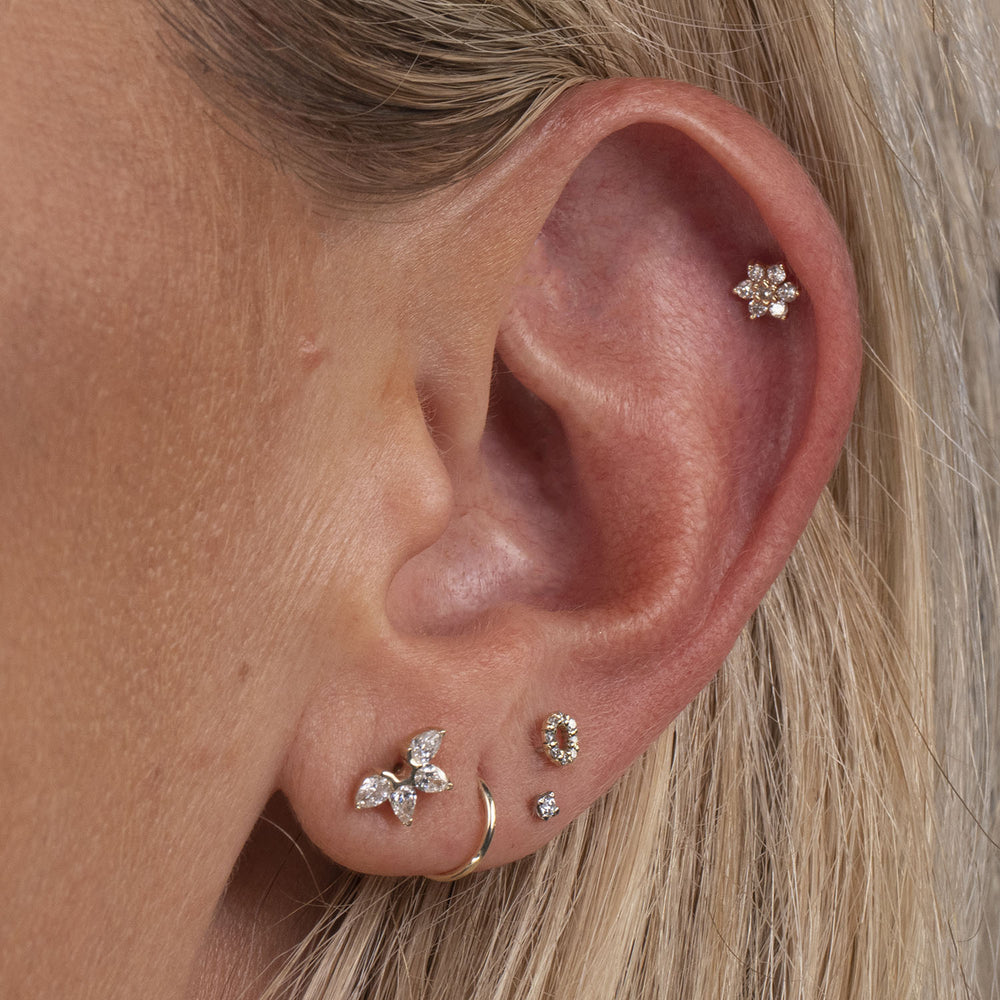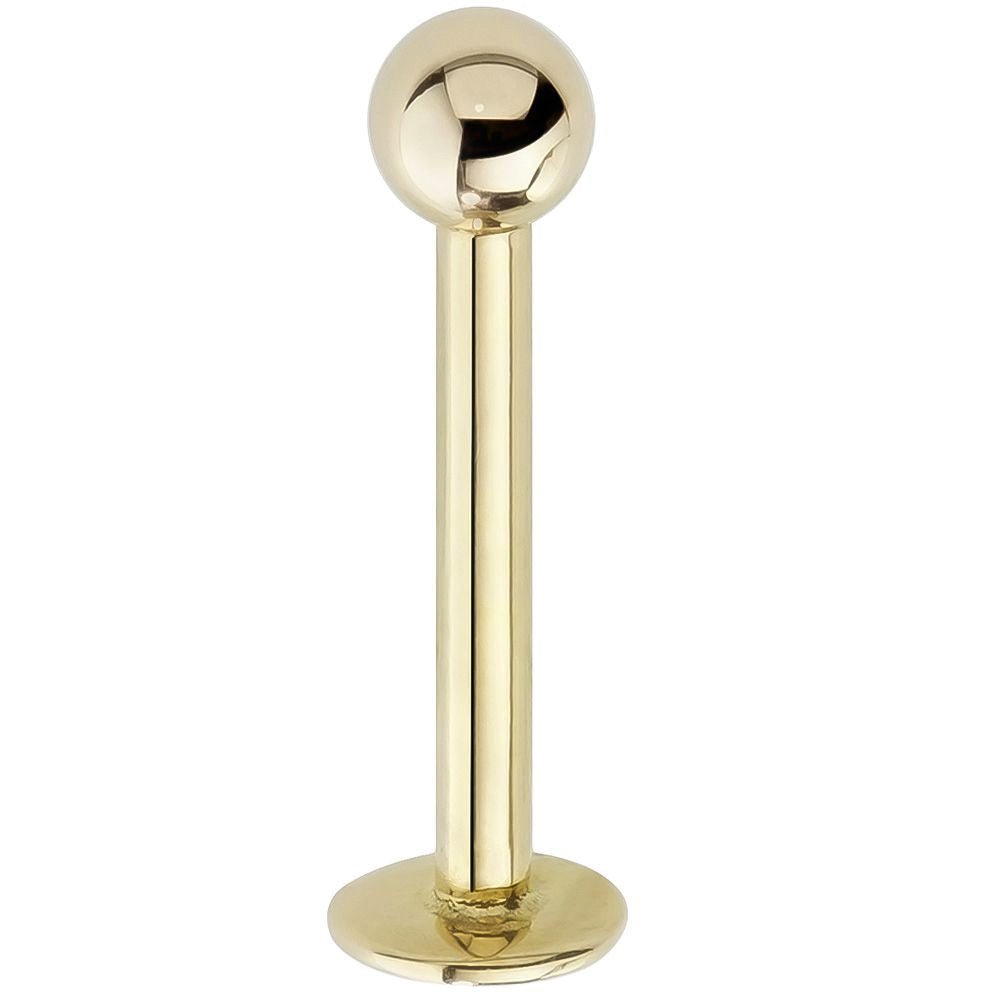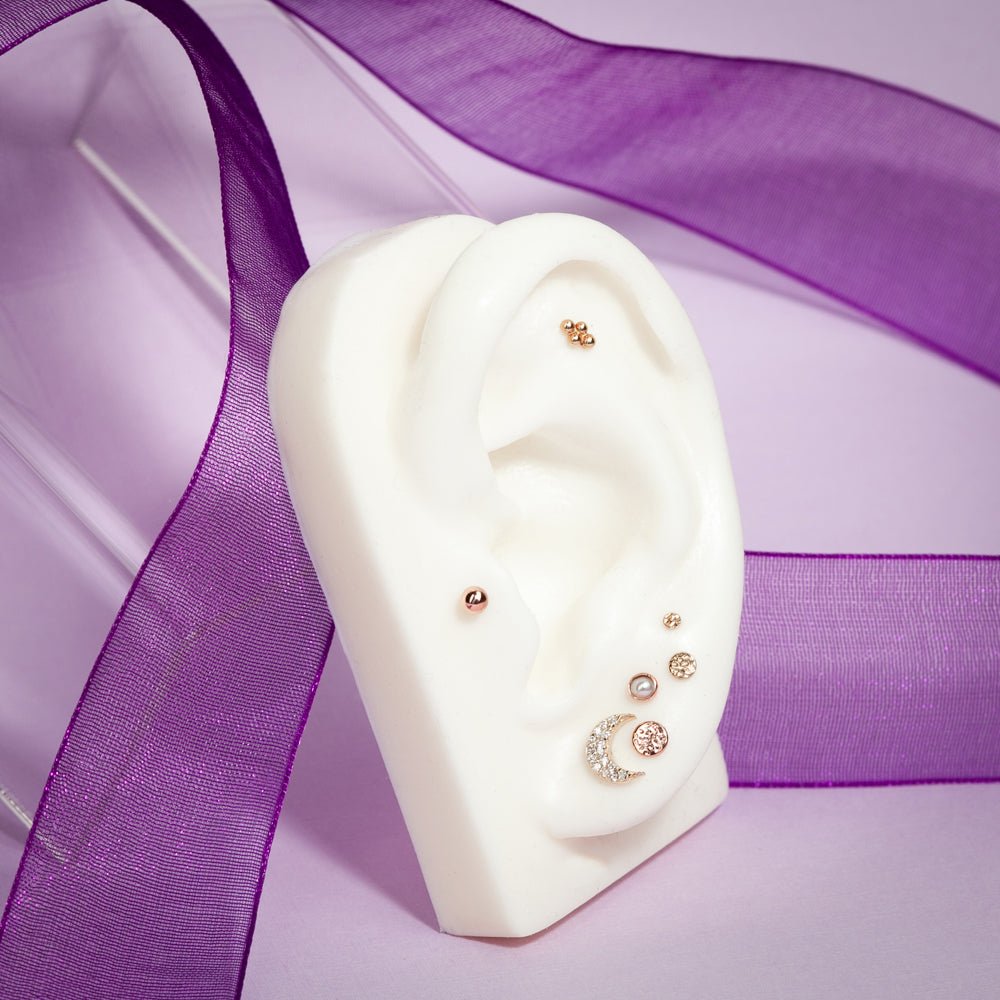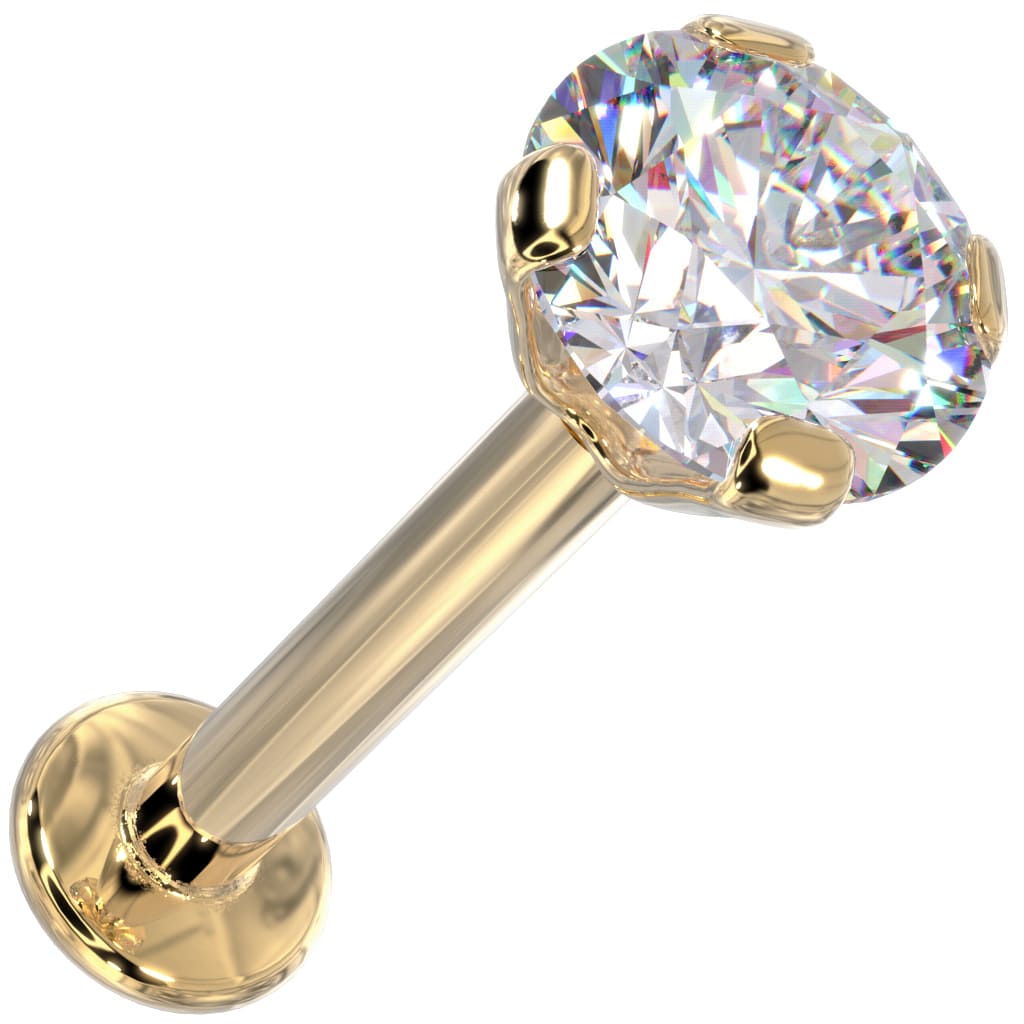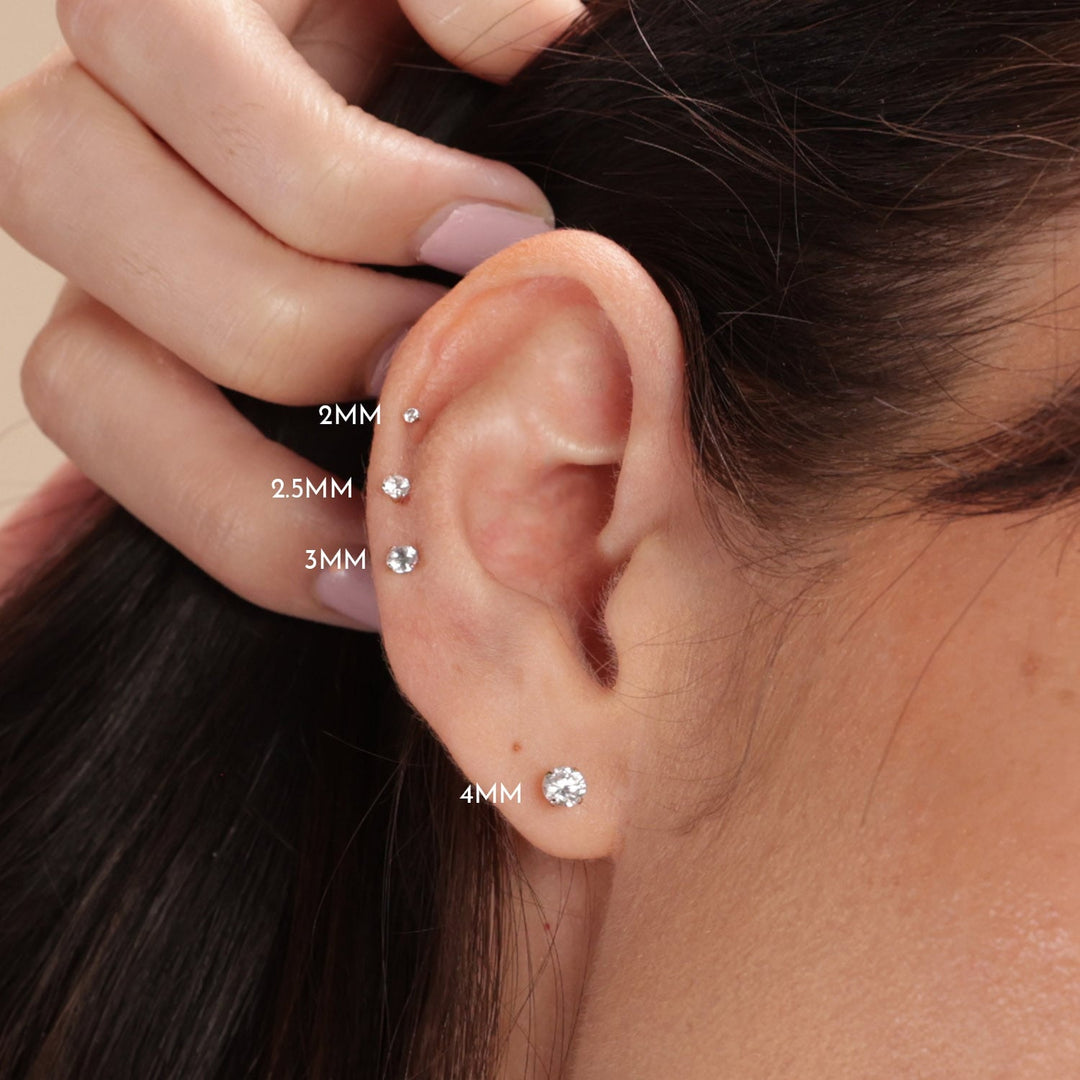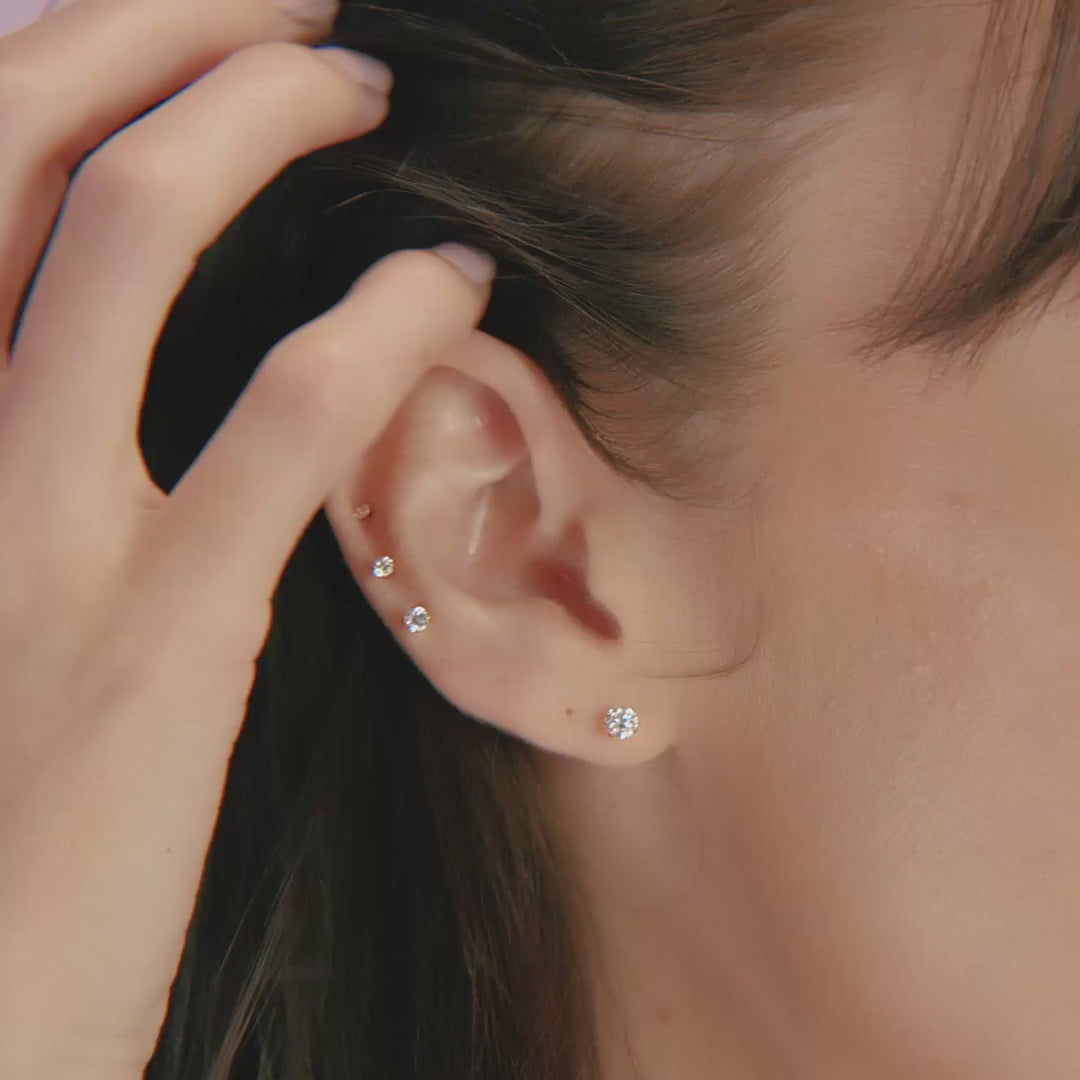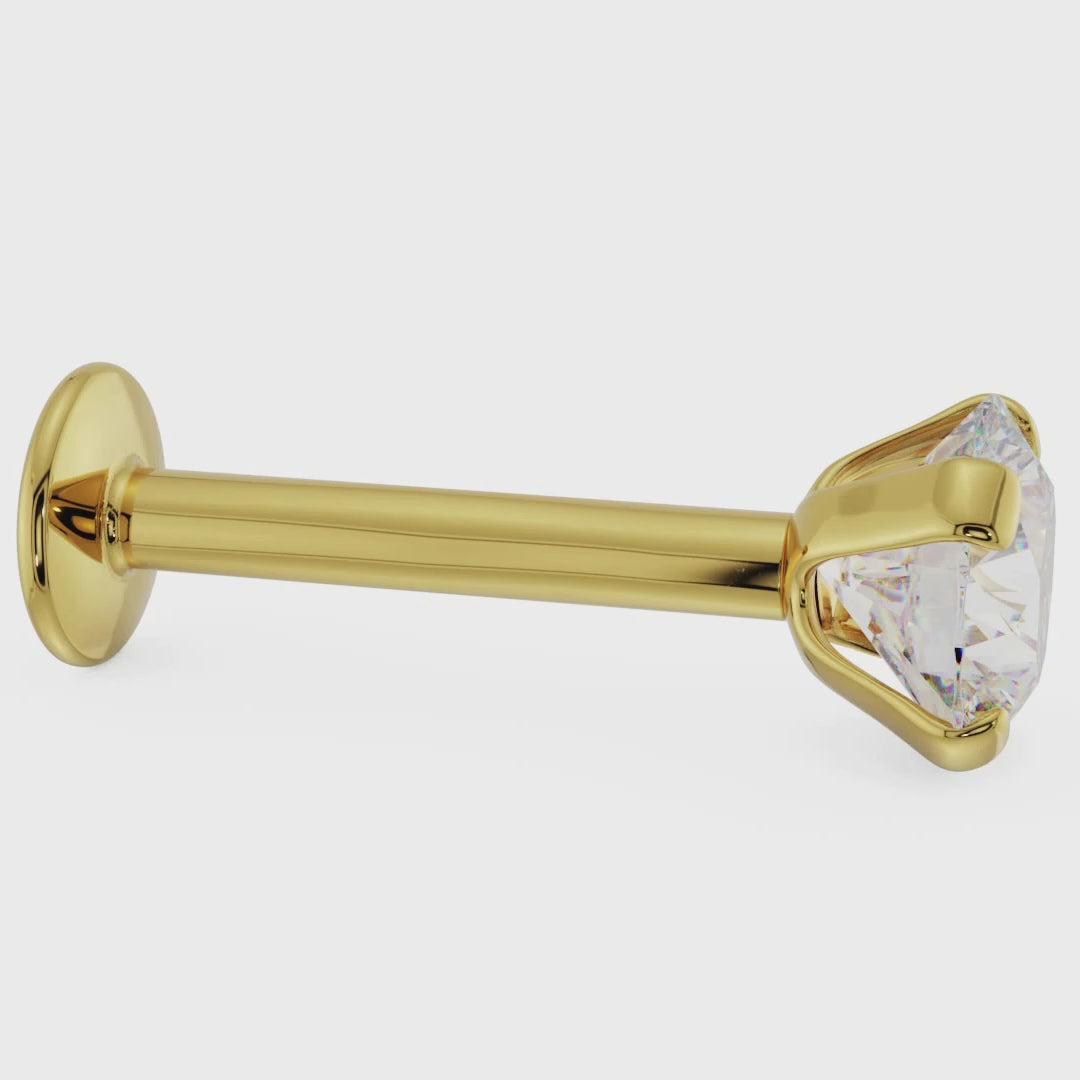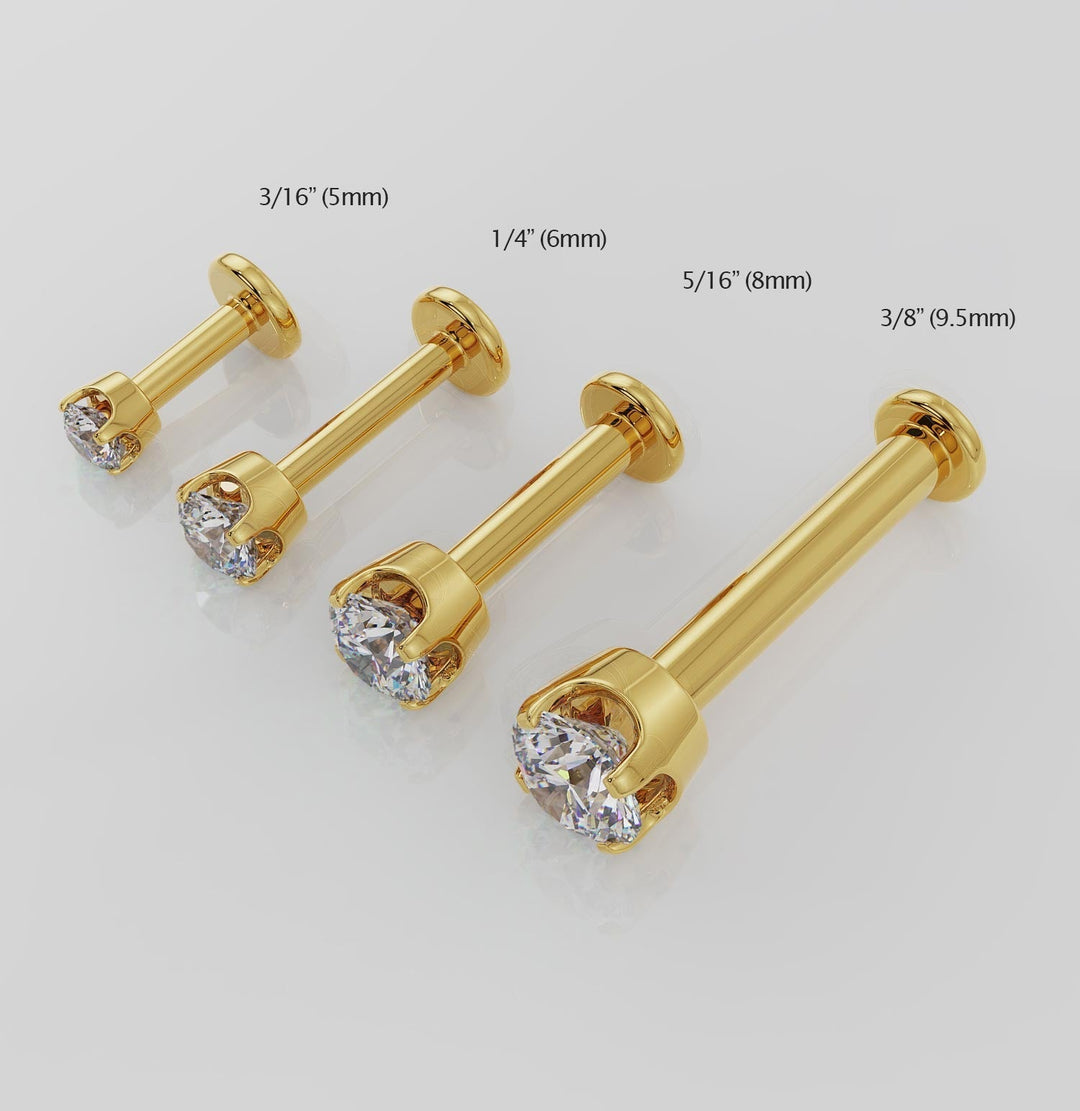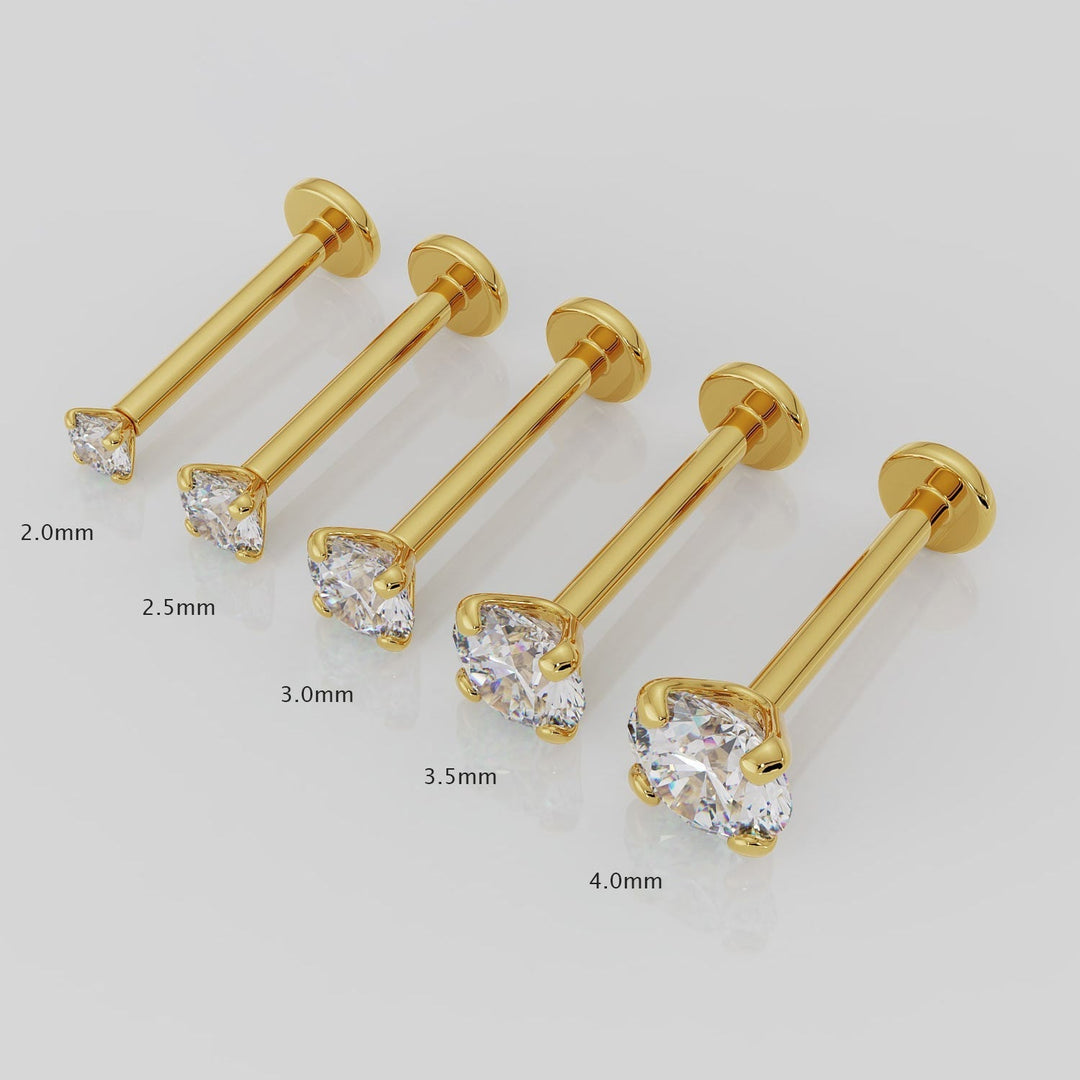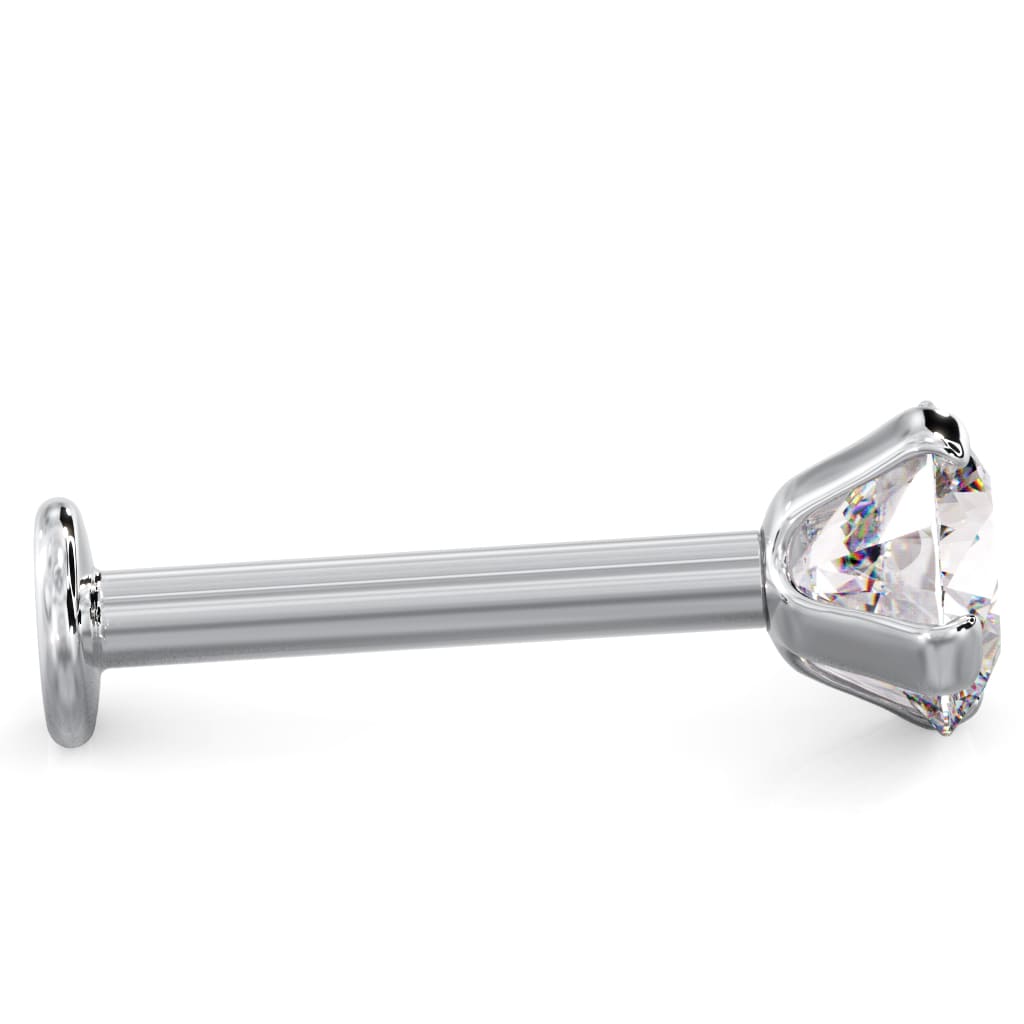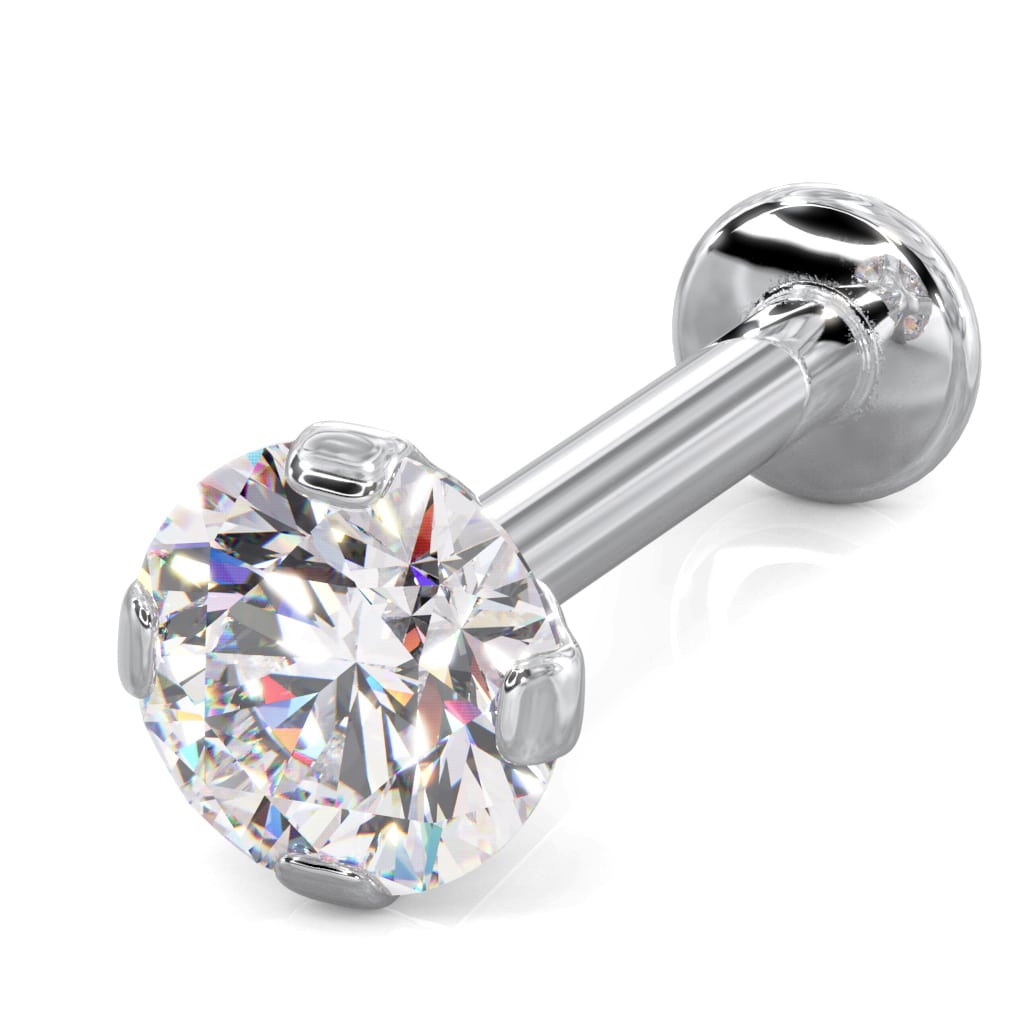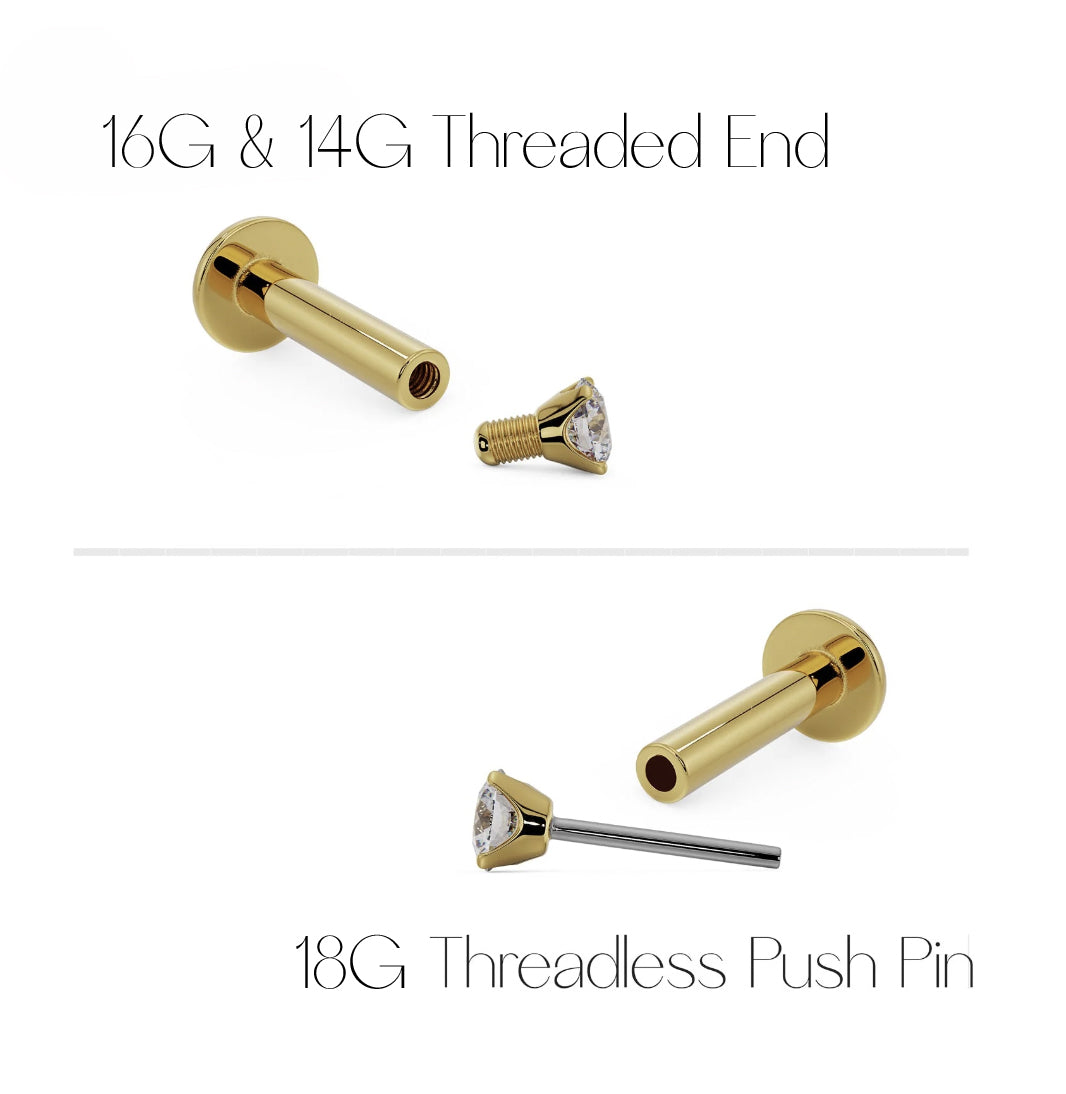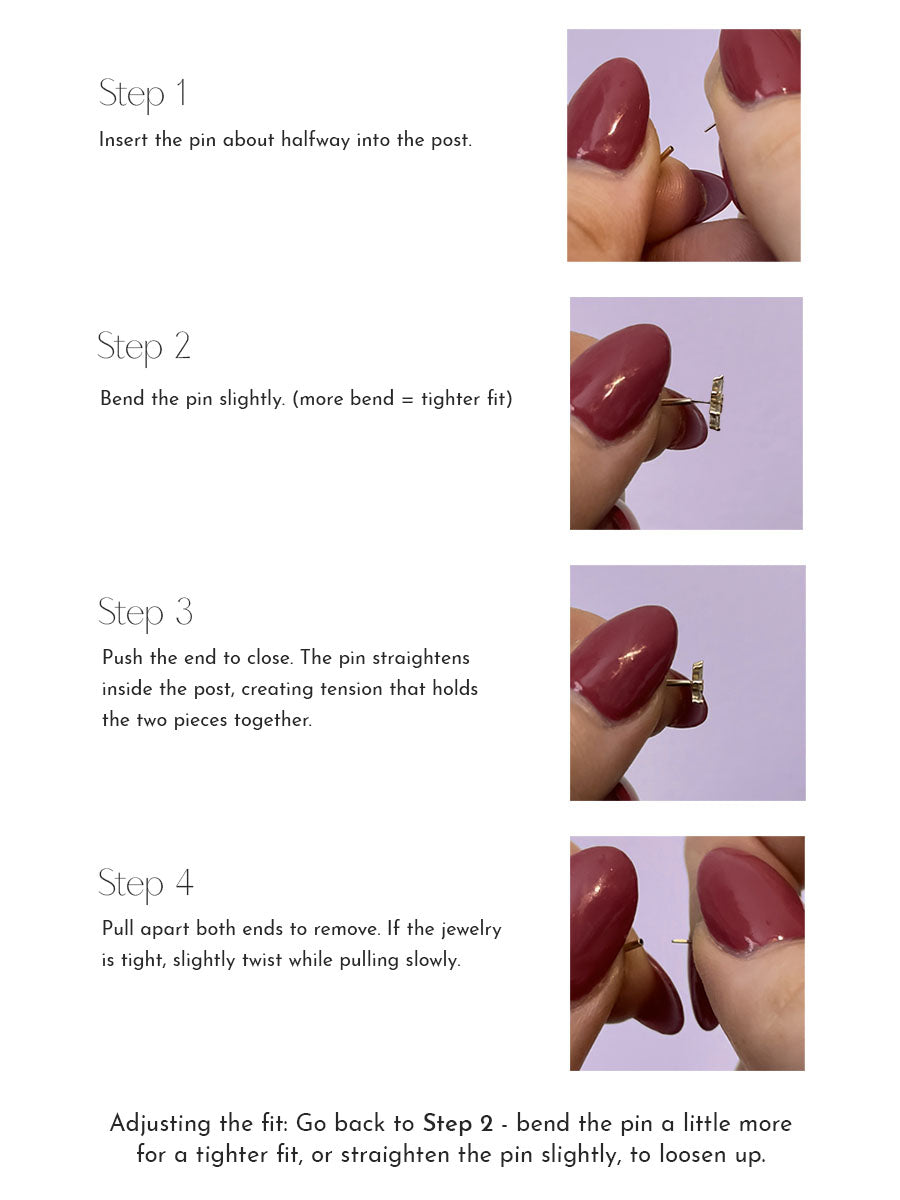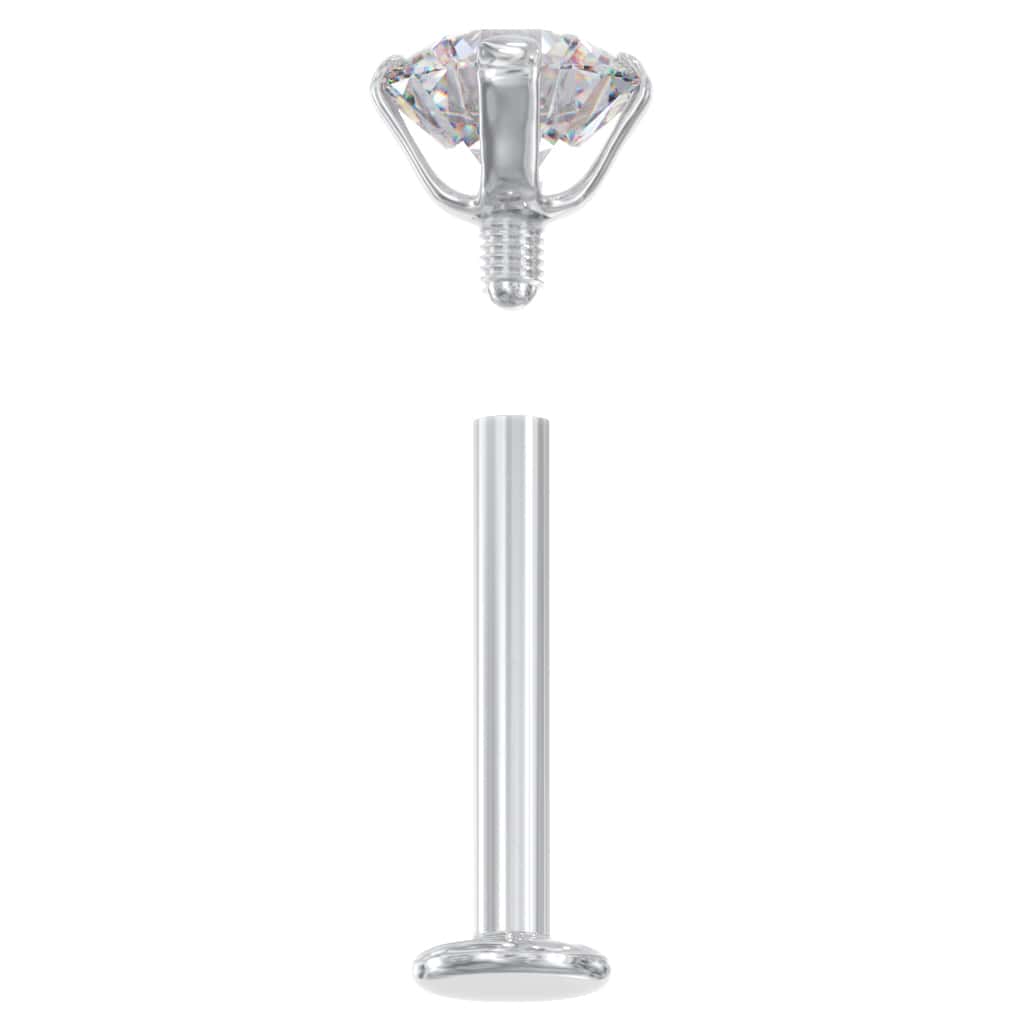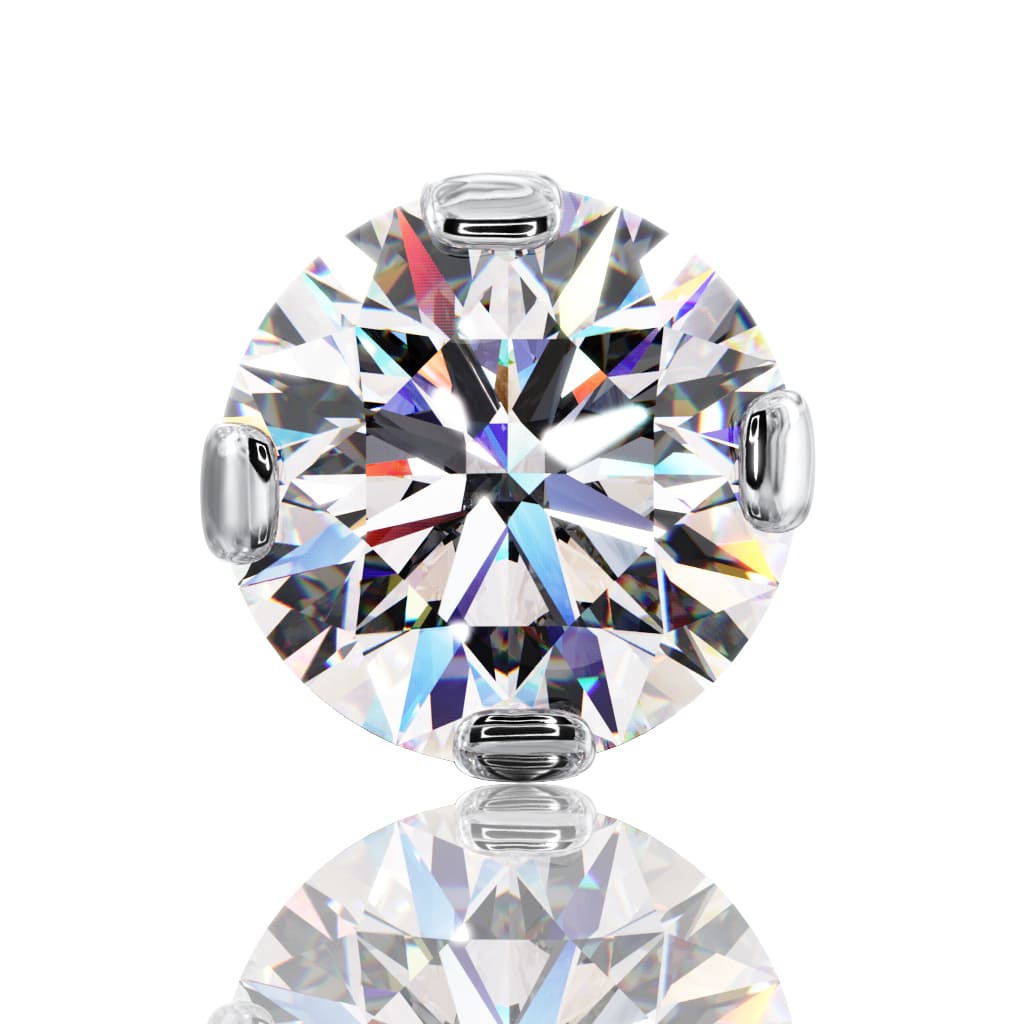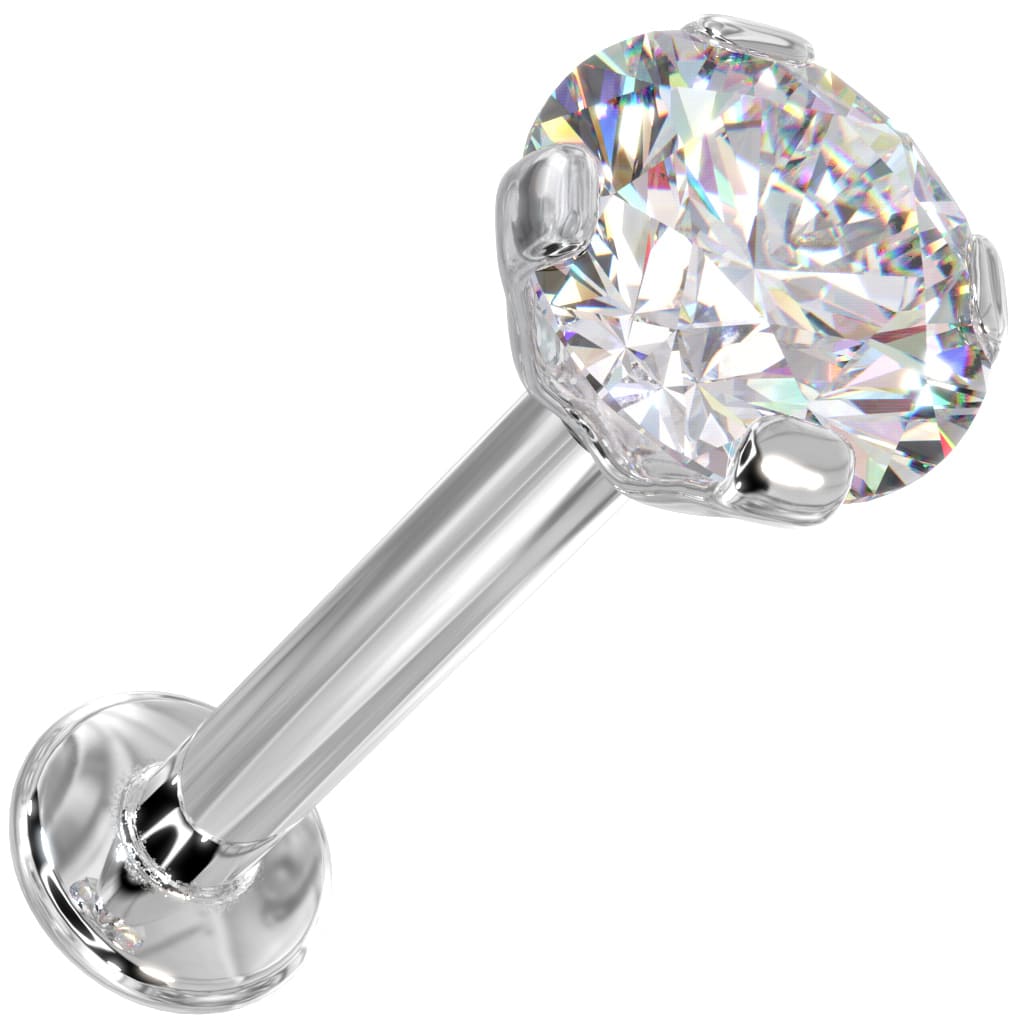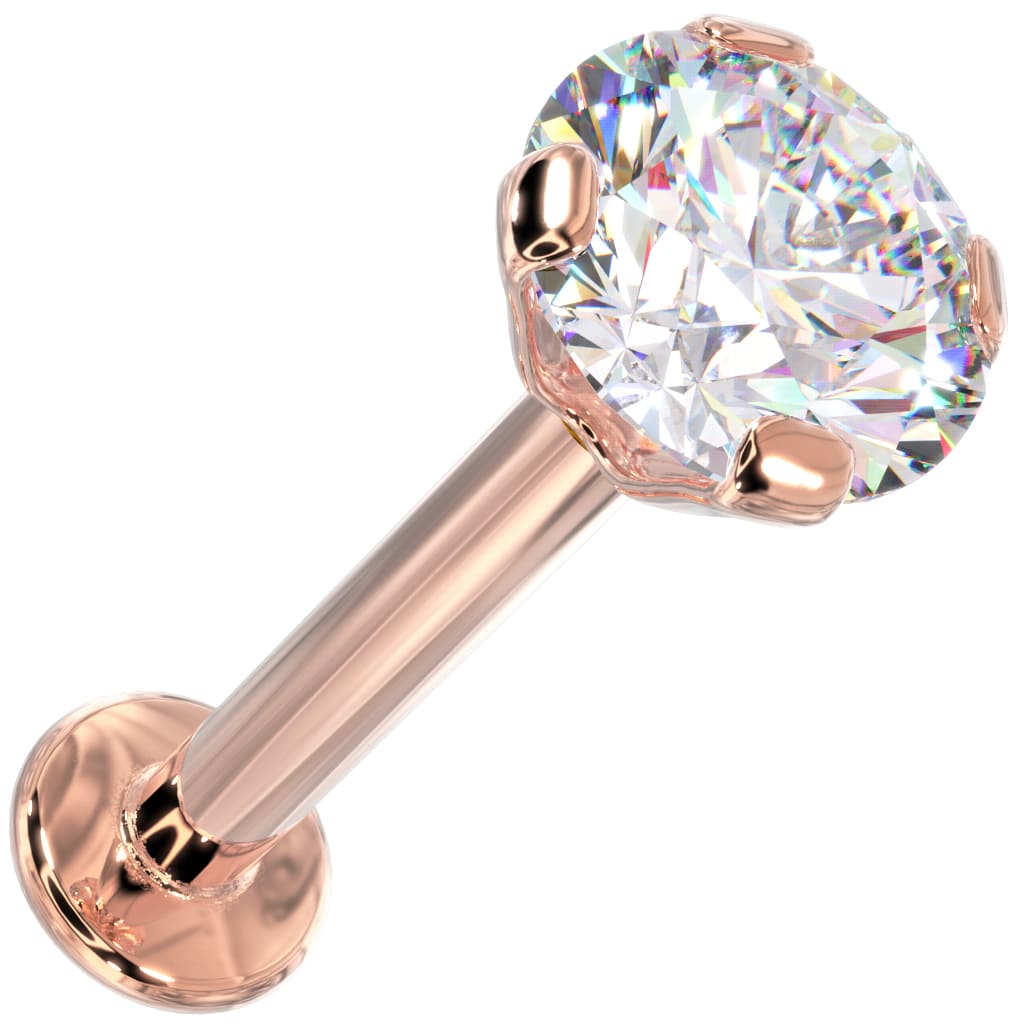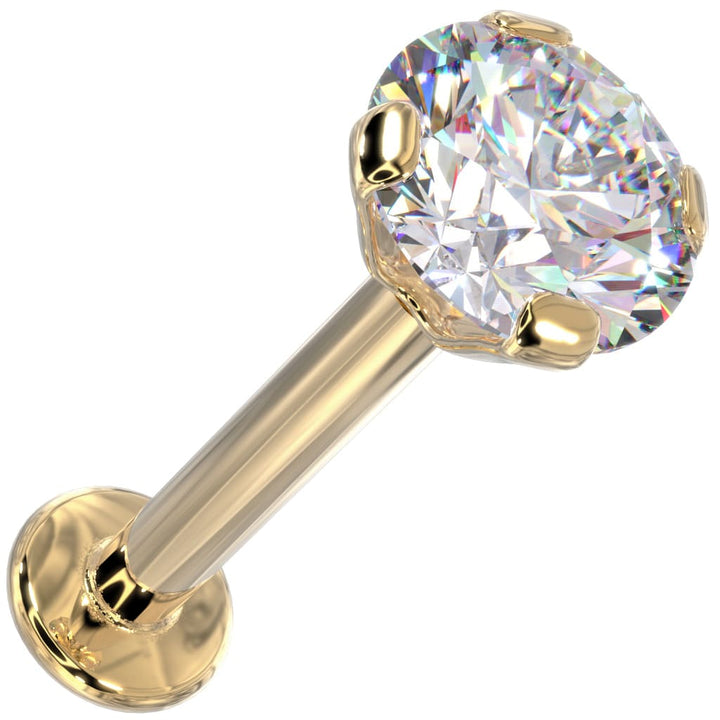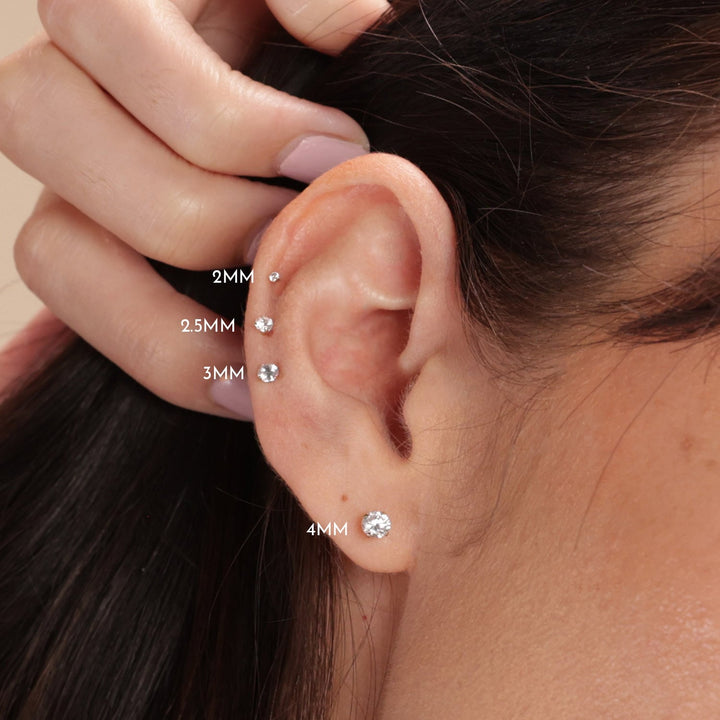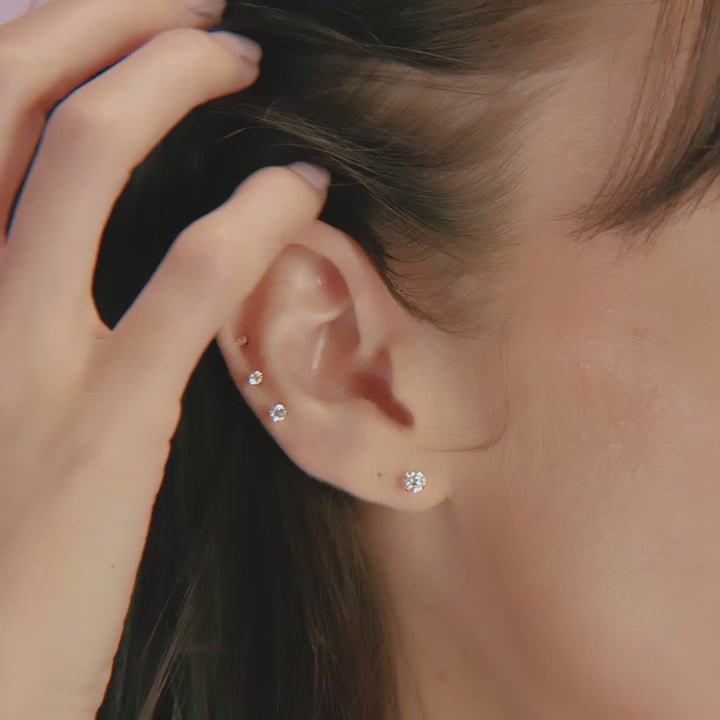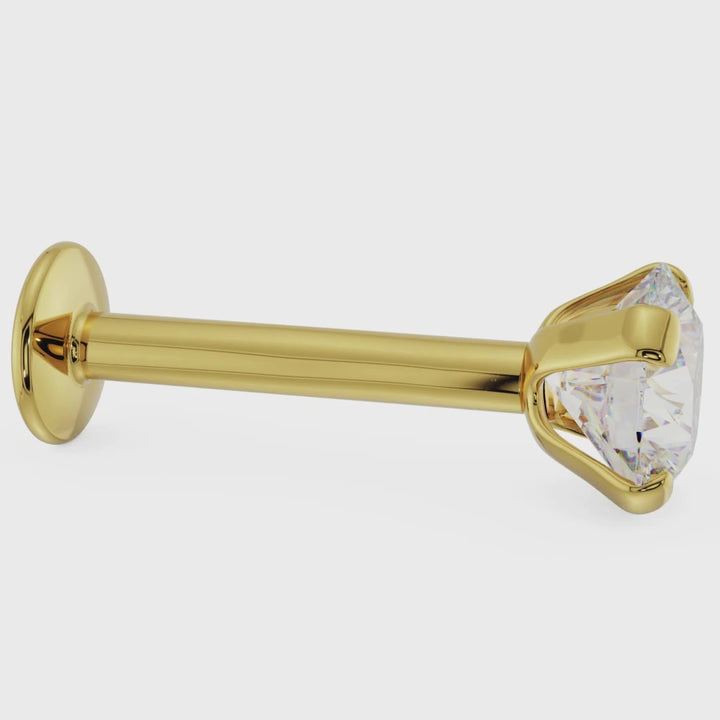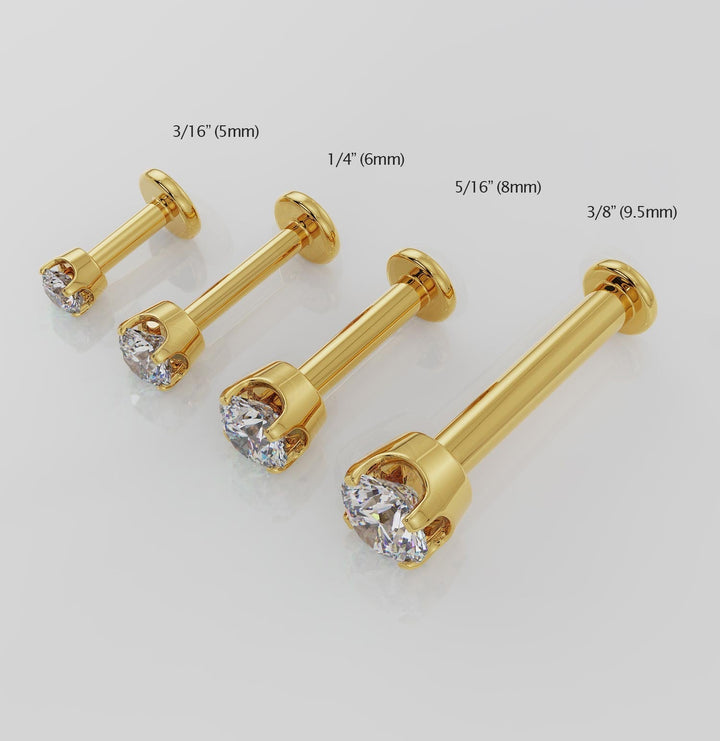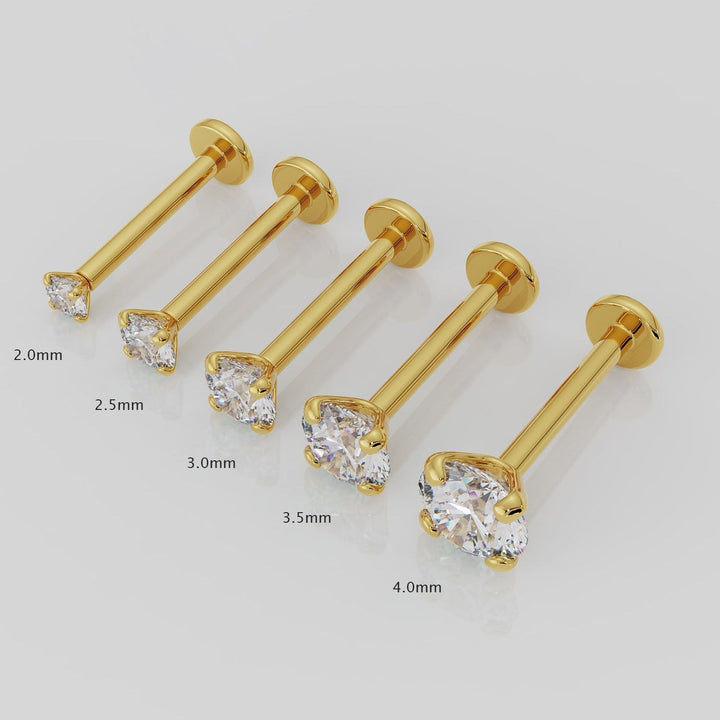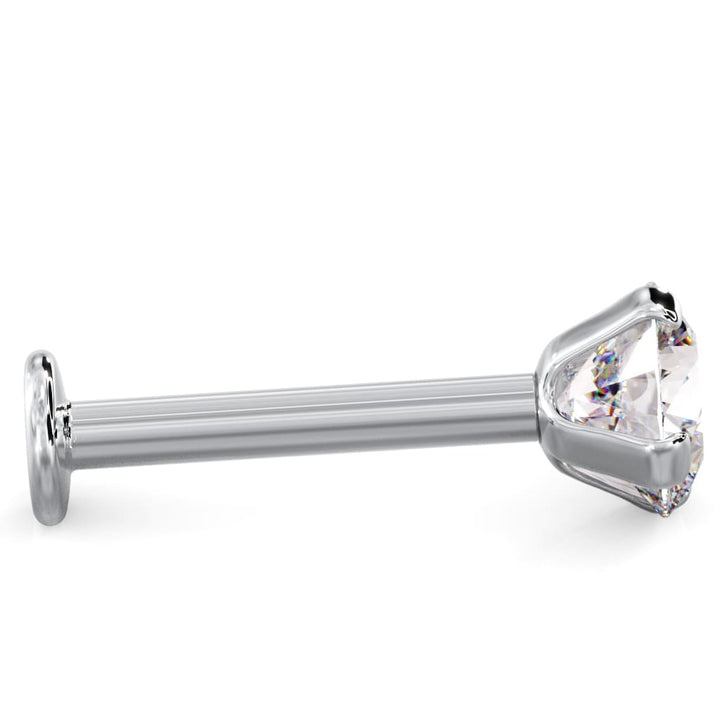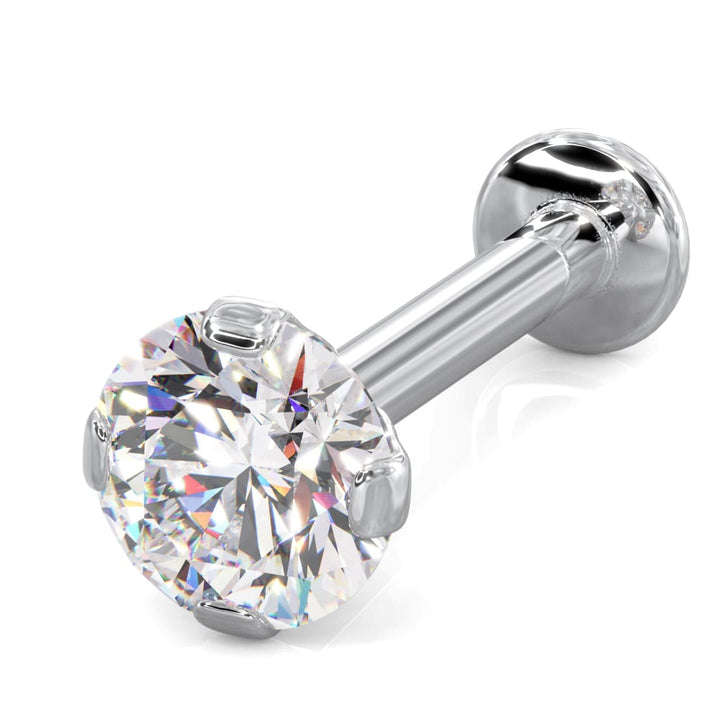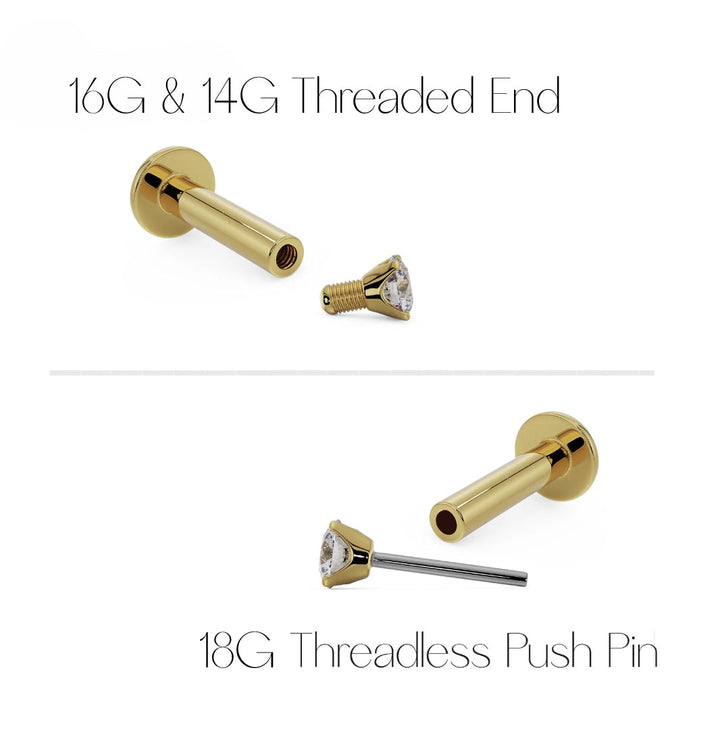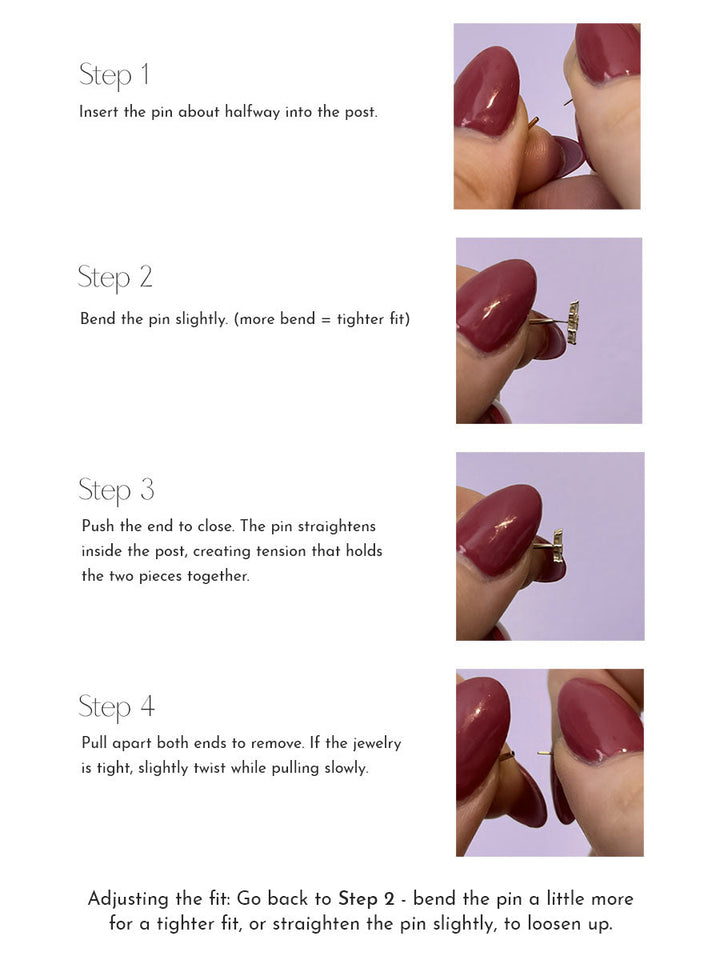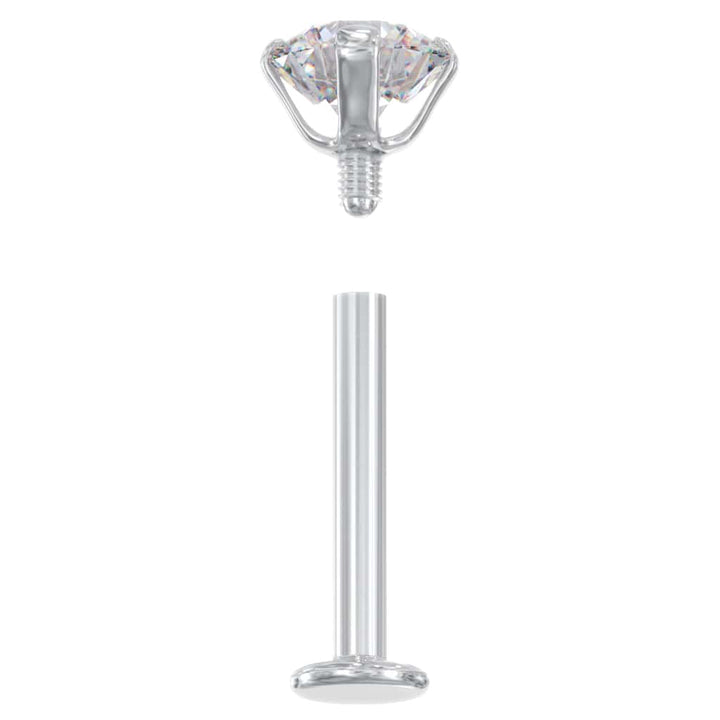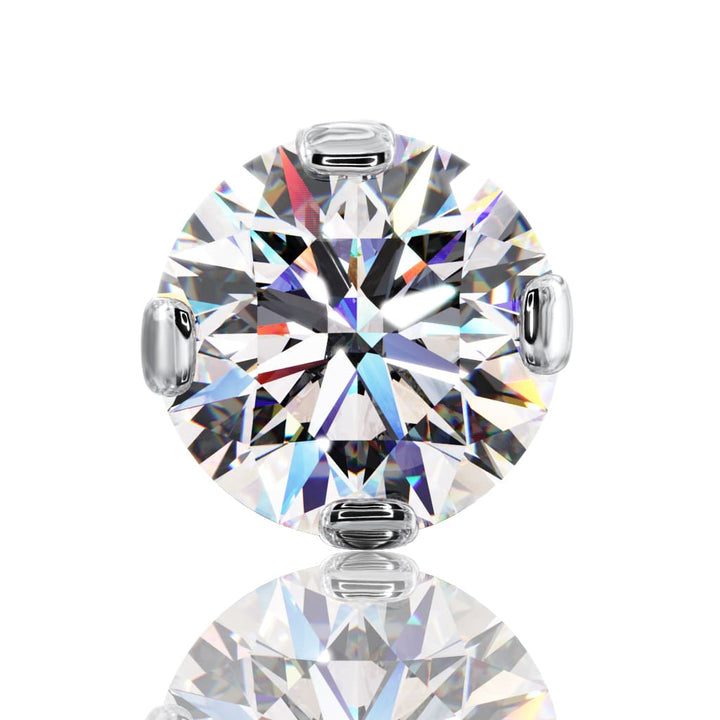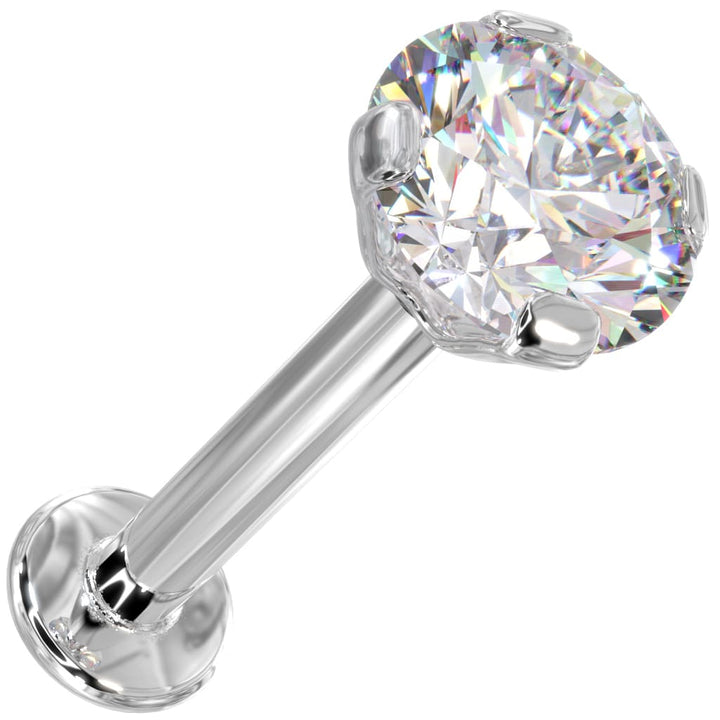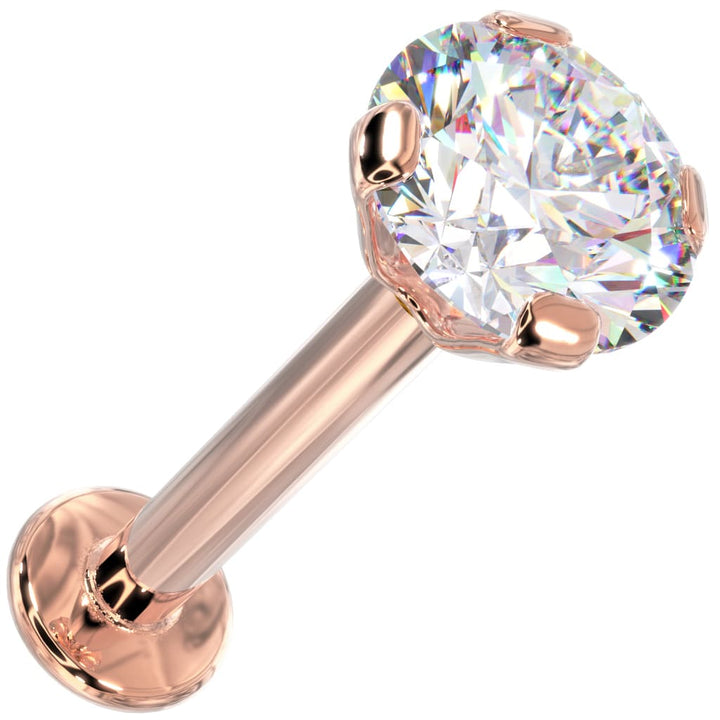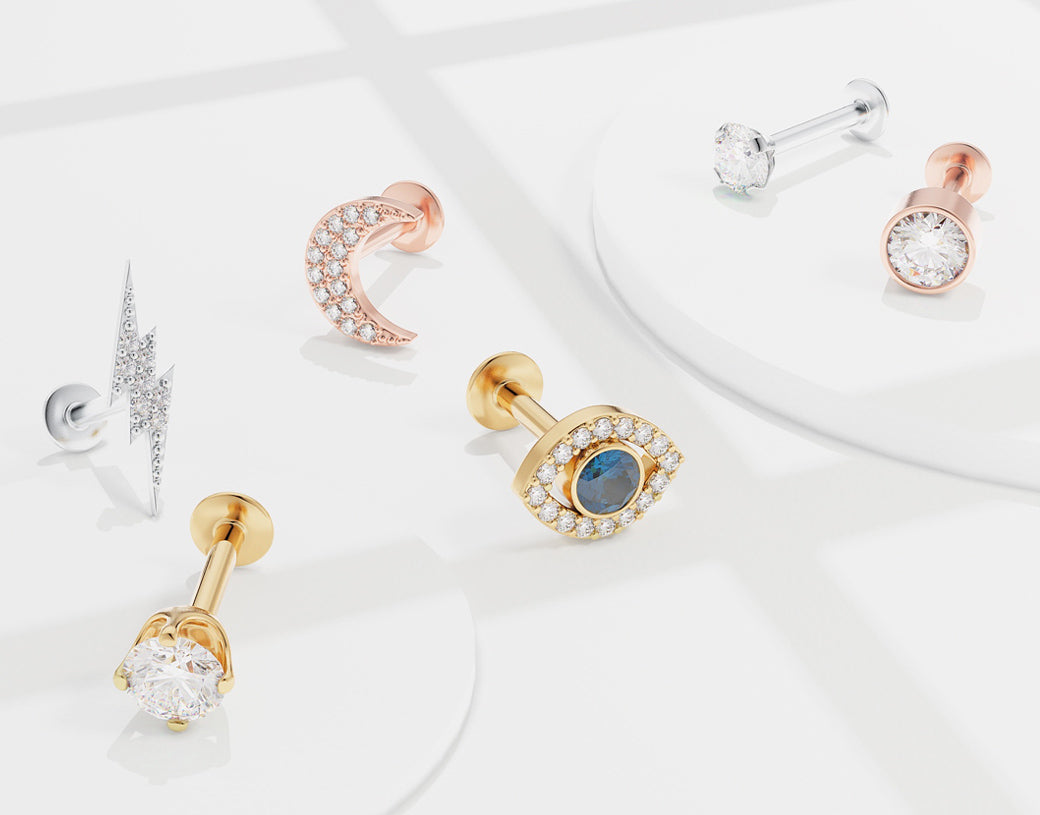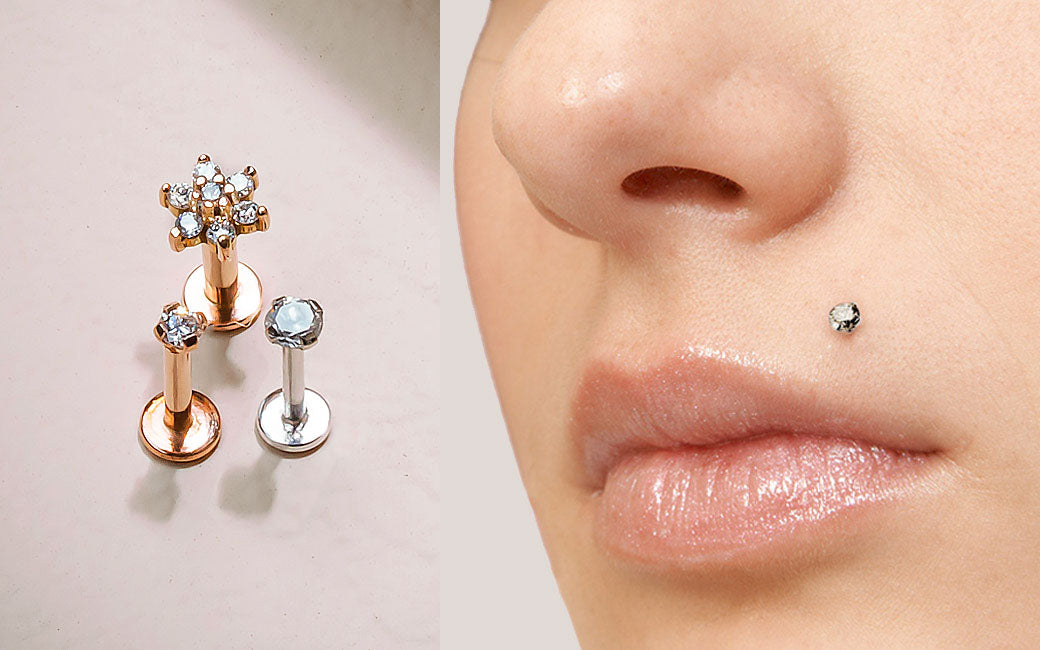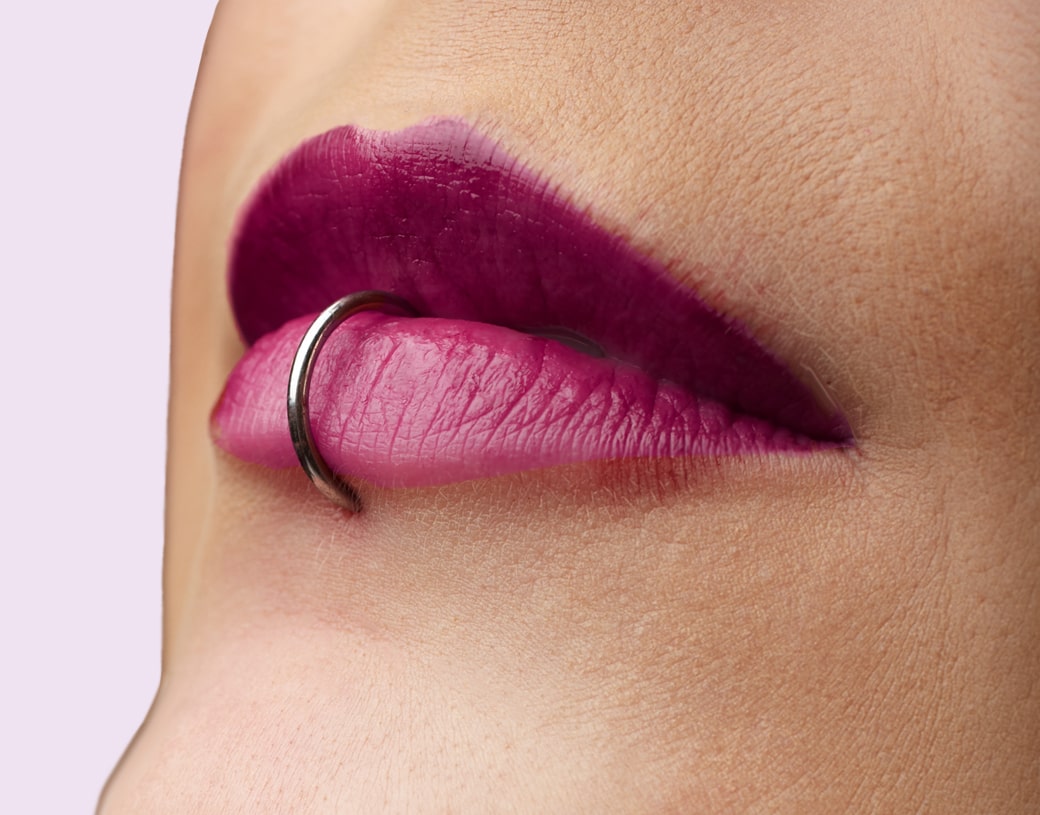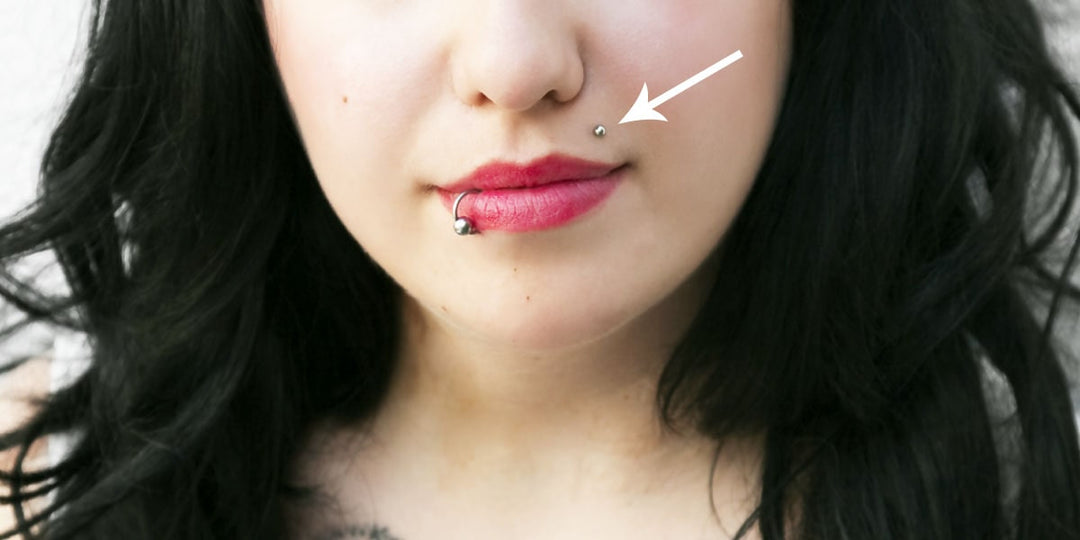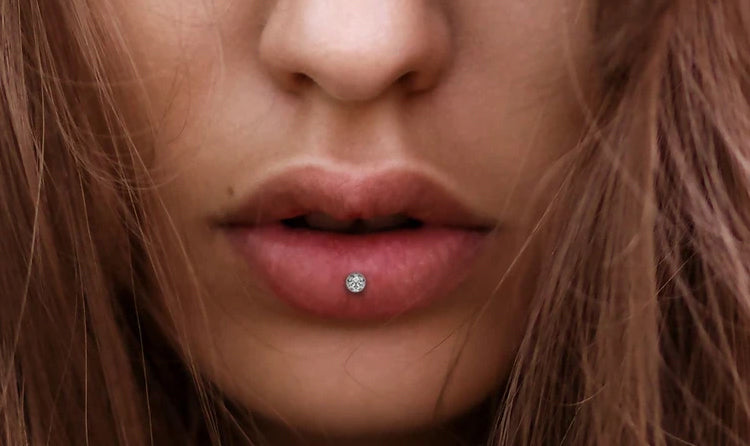The Medusa (Philtrum) Piercing: Everything You Need To Know


If you’re into alternative styles, then you’ve probably noticed the growing popularity of the Medusa piercing (also known as the philtrum piercing). An alluring and unique piercing, the Medusa look offers a modern lip piercing that invites gorgeous charms and gemstones for an unmatched aesthetic.
What Is The Medusa Piercing?
Located below the septum and right above the lip, the Medusa piercing is categorized as a lip piercing, but it actually appears above the lip itself. Many who choose this piercing pair it with other styles, like a vertical labret piercing, to create an alluring cluster of lip piercing jewelry.
Like all piercings, you need to adhere to proper aftercare practices, be aware of healing times, and know any potential health risks associated with the piercing. Whether you’re considering a Medusa or simply curious about the piercing process, you’ve come to the right place! Here’s a quick and easy guide to get you started on your Medusa piercing journey.
How Much Does The Medusa Piercing Hurt?
Since the lips and the area around the lips have more nerve endings than other body parts, you can expect a bit of pain during the piercing process, but it will be quick. Since the Medusa consists of only one puncture that your piercer will complete in one fluid motion, the pinch will last only a moment followed by some throbbing associated with any piercing.
The Medusa piercing tends to see a lot of swelling. Don’t be alarmed; this is characteristic of all lip piercings. If your Medusa piercing swells, pay attention to the jewelry. If the jewelry starts pressing against the skin, you’ll need to have your piercer switch out the jewelry for a larger size. Once swelling has gone down (after a few days), you can switch to a smaller jewelry size.
Related Products
View allFast Facts
After Care
Medusa Piercing Healing And Aftercare
Depending on your anatomy, your body’s immune system, and how well you take care of your piercing during healing, the Medusa will take 2 - 3 months to fully heal. It’s important to note that these are the minimum healing times, and it can take longer depending on your body’s ability to heal. Therefore, be sure to visit your piercer and have them confirm that your Medusa piercing has fully healed before changing the jewelry and stopping aftercare practices. Failure to do so could result in damage that prolongs healing, causes trauma, or even causes you to lose the piercing.
Medusa Piercing Aftercare Rules
Like all other piercings, keeping your healing Medusa piercing clean requires nothing more than cleaning it 2 - 3 times daily with a piercing aftercare saline solution per your piercer’s instructions. When choosing an aftercare solution, make sure that you choose one that only contains salt and water. Some piercing aftercare solutions contain additives, like tea tree oil, that are advertised to excel healing but actually inhibit it.
Beyond keeping your Medusa clean, there are a few more things that you need to keep in mind to keep your piercing safe until it fully heals.
- Keep an eye on swelling. The Medusa piercing has a tendency to swell in the first few days after piercing. As it swells, you need to watch your jewelry. Jewelry that’s too small can press against the piercing, which causes trauma to the piercing area. When the swelling has gone down after a few days, you can (and should) switch to a smaller jewelry piece.
- Don’t touch your jewelry more than you have to. Tugging or twisting the jewelry can irritate the surrounding skin. When crusties form, rather than picking at them or twisting the jewelry to remove, soak a clean paper towel with saline solution and gently dab at the area, careful not to move the piercing jewelry, until the area is clean.
- Keep the piercing dry. Don’t take baths, and when you shower, try to keep the piercing out of the water as much as possible. To dry, gently dab the piercing with a paper towel or air dry it using the cool setting on your hair dryer.
- Keep makeup away from the piercing. Makeup can easily get in the healing piercing, causing infections, pustules, and irritation. As your piercing heals, keep makeup and other facial products completely away from the piercing site.
- Take care when brushing your teeth. Oral hygiene is incredibly important when healing any lip piercing, but it’s also something that requires special care. Consider brushing your teeth after every meal, and be extra careful when brushing near your piercing so that you don’t tug at the jewelry. Do not use mouthwash with alcohol in it because this will irritate your piercing. Instead, swish a mixture of salt and water.
- Watch what you eat. Acidic and spicy foods will not only be painful to eat, but they can irritate the piercing, causing things like piercing bumps. The first few days after getting the Medusa piercing, opt for soft foods that don’t need to be chewed as you get used to the new jewelry.
Possible Medusa Piercing Side Effects
Like any piercing, there’s a risk of side effects. Most of these side effects can be avoided through proper care, however, snags can happen, and sometimes, a side effect may appear even if you’ve done everything right.
- Piercing rejection occurs when your body has decided that the jewelry shouldn’t be there. It usually happens due to poor placement, improper jewelry materials, or trauma to the piercing site, but sometimes it’s just bad luck. Watch for signs of piercing rejection—the piercing hole starts growing, the area around the piercing becomes red and flaky, the jewelry has moved noticeably—and if you notice any signs, talk to your piercer. You need to act fast in order to avoid any scarring or other marks.
- Piercing bumps on the Medusa piercing are among the most common piercing side effects, and they typically arise due to irritation. To avoid piercing bumps, keep any product that isn’t piercing aftercare saline solution (like makeup, face wash, tea tree oil, or other products) away from the piercing. Don’t pick at or touch the piercing, and do your best to avoid snagging. If a piercing bump should appear, don’t worry, they usually go away on their own. Have your piercer take a look to discuss possible treatment options.
- Medusa piercing infections are a possible side effect, but they’re rarer than you might think. If you’ve been cleaning your piercing every day, then you are very unlikely to develop a piercing infection. However, piercing infections do happen, and they are nothing to play around with. If your Medusa piercing starts secreting yellow or green pus, it feels hot, it swells to a crazy big size, it sees significant bleeding, or you develop a fever, talk to a doctor as soon as possible.
Medusa Piercing Jewelry And Jewelry Materials


Now that we’ve covered the scary parts about this super cute piercing, it’s time to get to the fun part: the jewelry.
Although there are tons of body jewelry material options out there, there are actually only a few suitable body jewelry materials, as per the Association of Piercing Professionals. (You can find that full list here.) For starter jewelry, we recommend titanium. Titanium is inexpensive, and it contains few alloys, so it won’t irritate your skin. However, starter jewelry should only be worn for the first week or so since it will be a bit oversized to accommodate swelling.
Once swelling has gone down, you can switch to a gorgeous 14k gold or platinum piece. These two jewelry materials look amazing, and they are durable enough to last a lifetime.
By far, the most popular jewelry seen in a Medusa is a lip piercing stud. A lip stud consists of a flat disc back, a barbell, and a bead or charm screwed to the front. You’ll want to opt for internally threaded jewelry to avoid snags or tears.
Most Medusa piercings take either a 14G or 16G lip stud. When you choose the length of the lip stud’s barbell, make sure that the stud doesn’t extend too far or pinch too tightly. Jewelry that’s too small can embed in the skin, and larger jewelry might scrape against your gums and contribute to a receding gum line.
How To Change Medusa Piercing Jewelry
Because the piercing is placed perpendicularly to the skin, changing your Medusa piercing jewelry isn’t as hard as some other piercings.
1. Gently remove the existing jewelry by unscrewing the back of the jewelry and pulling the stud out of the piercing from the front.
2. Unscrew the internally threaded back of the new jewelry.
3. Gently insert the prong of the Medusa lip piercing stud into the piercing hole. Try not to move the jewelry around too much. Extensive movement could cause trauma to the piercing, even when fully healed.
4. Screw the back into the prong. Make sure that you don’t tighten too much so that you don’t damage the threading. It should be firm but not too tight.
Related Collections
How Much Will It Cost?
As always, pricing will vary from piercer to piercer. While we always recommend opting for the more expensive and experienced piercer, with the Monroe piercing, this is especially true; there are so many nerve endings in the lips to be aware of, and a poorly placed Monroe piercing could wreak havoc on your gums.
Typically, the Monroe piercing costs around $50 - $80. You should, however, choose your piercer based on their abilities rather than finding the cheapest option. Never choose a piercer who uses a piercing gun; these harbor more bacteria, and the blunt force it uses to puncture the skin can cause damage. You’ll want to make sure that the piercer uses a clean needle instead.
FreshTrends Tip
Why Shouldn’t I Get A Medusa Piercing?
The location of the Medusa piercing helps accentuate the shape of your lips and draws attention to the lower half of your face. Because it typically hosts smaller jewelry, people with many different face shapes can rock this piercing to its fullest.
However, its location also makes it a prominent piercing, so you want to make sure that you are 100% positive that this is a piercing that you want before taking the plunge.
If you’re susceptible to receding gum lines or other oral issues, you might want to think twice about this piercing. Healing time will depend on your oral hygiene, and the jewelry can rub against your gums, causing issues.
If there’s only a small space between your lips and your septum, you might want to consider other lip piercings like the labret, Monroe, or Madonna.
Medusa Piercing Cost
Although prices vary, this piercing will cost you somewhere between US $40 and US $80. Since the piercing is located near many nerve endings, needs to be centrally located, and is extra susceptible to bacterial infection because of its location in the mouth, you won’t want to skimp on the quality of your piercer. Don’t be afraid to spend a little more so that you can be sure that you’re happy with your piercing.
Medusa Piercing Variations
We love body jewelry for its ability to help us show our individual personalities, so we love when we can take advantage of unique takes on standard piercings!
The double Medusa piercing consists of two vertical punctures beneath the septum. This style looks adorable with two dainty lip studs stacked on top of each other. Since two piercings are required for this style, often piercers recommend that you receive them one at a time for less pain and easier healing.
The Medusa piercing also pairs well with a septum piercing and vertical labret piercings due to its proximity.


